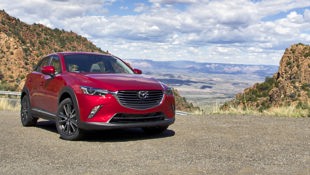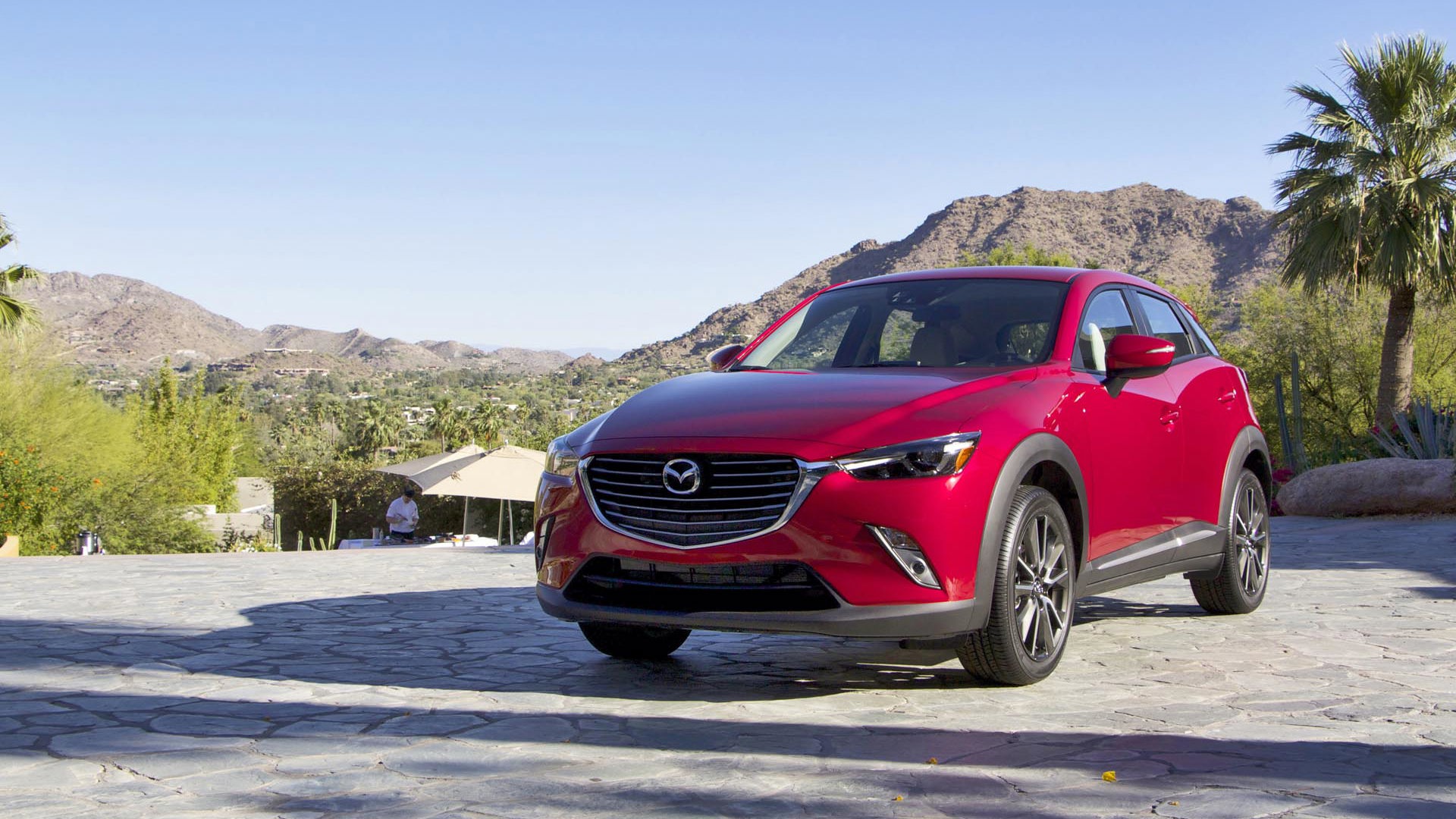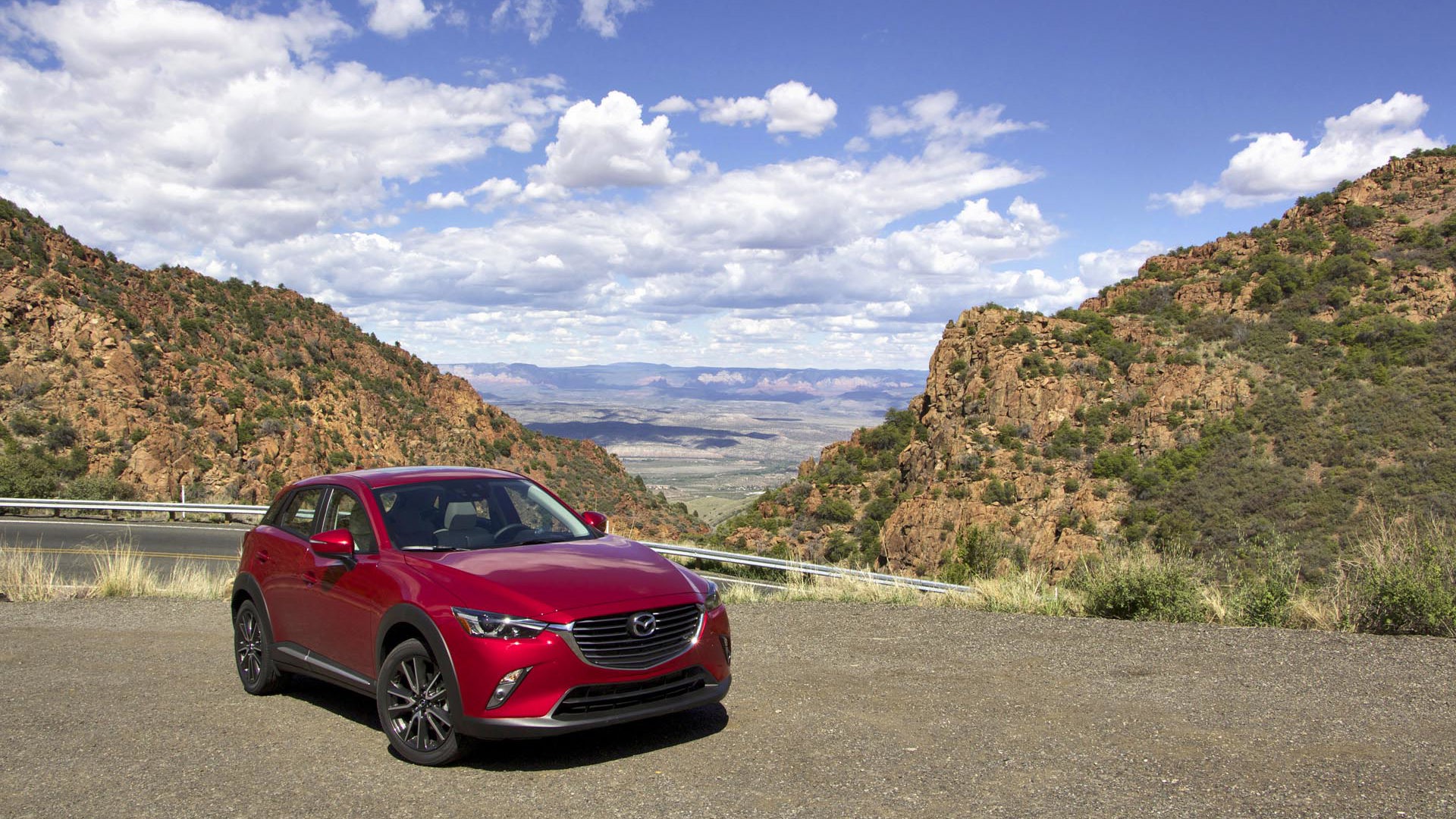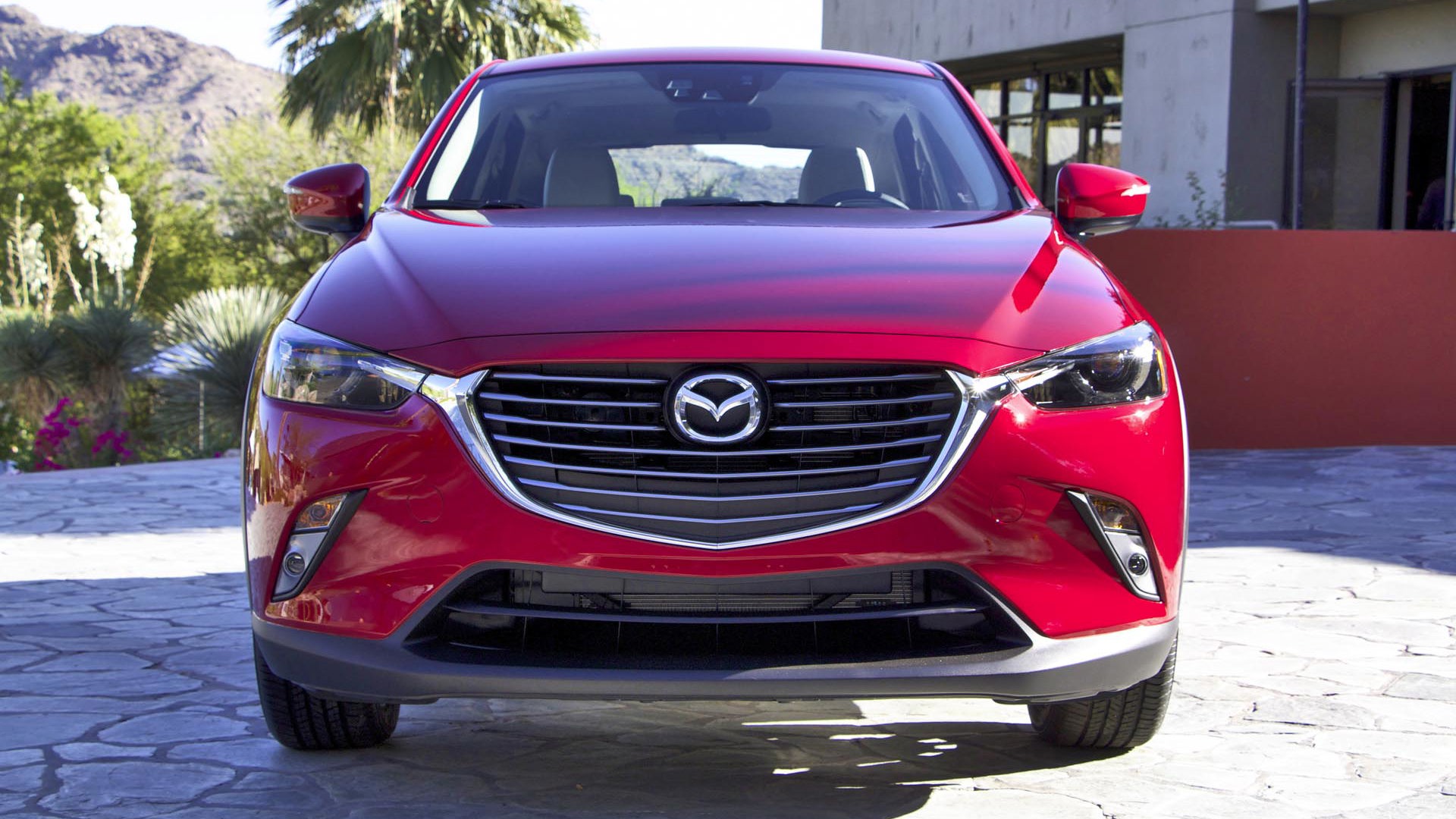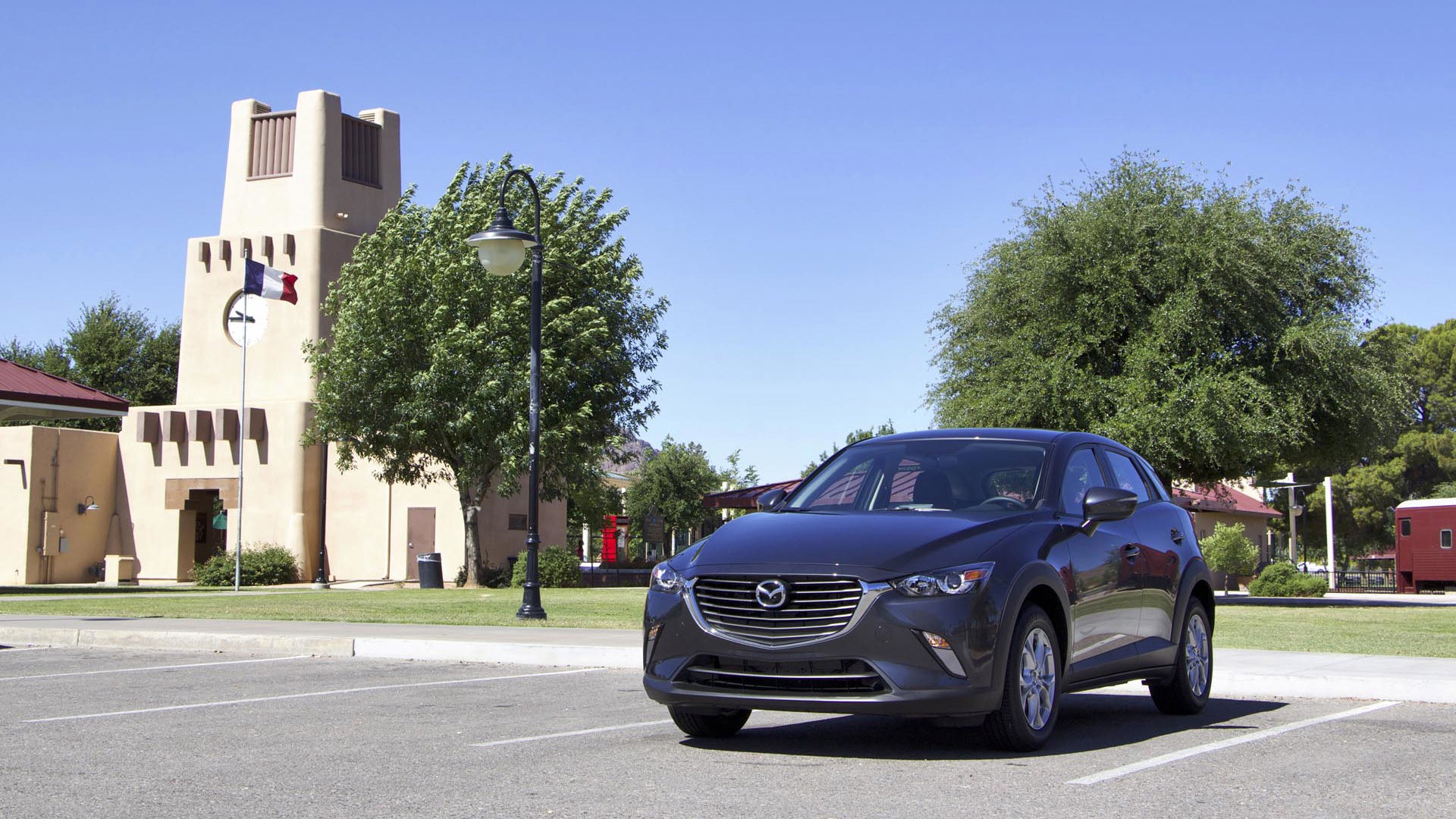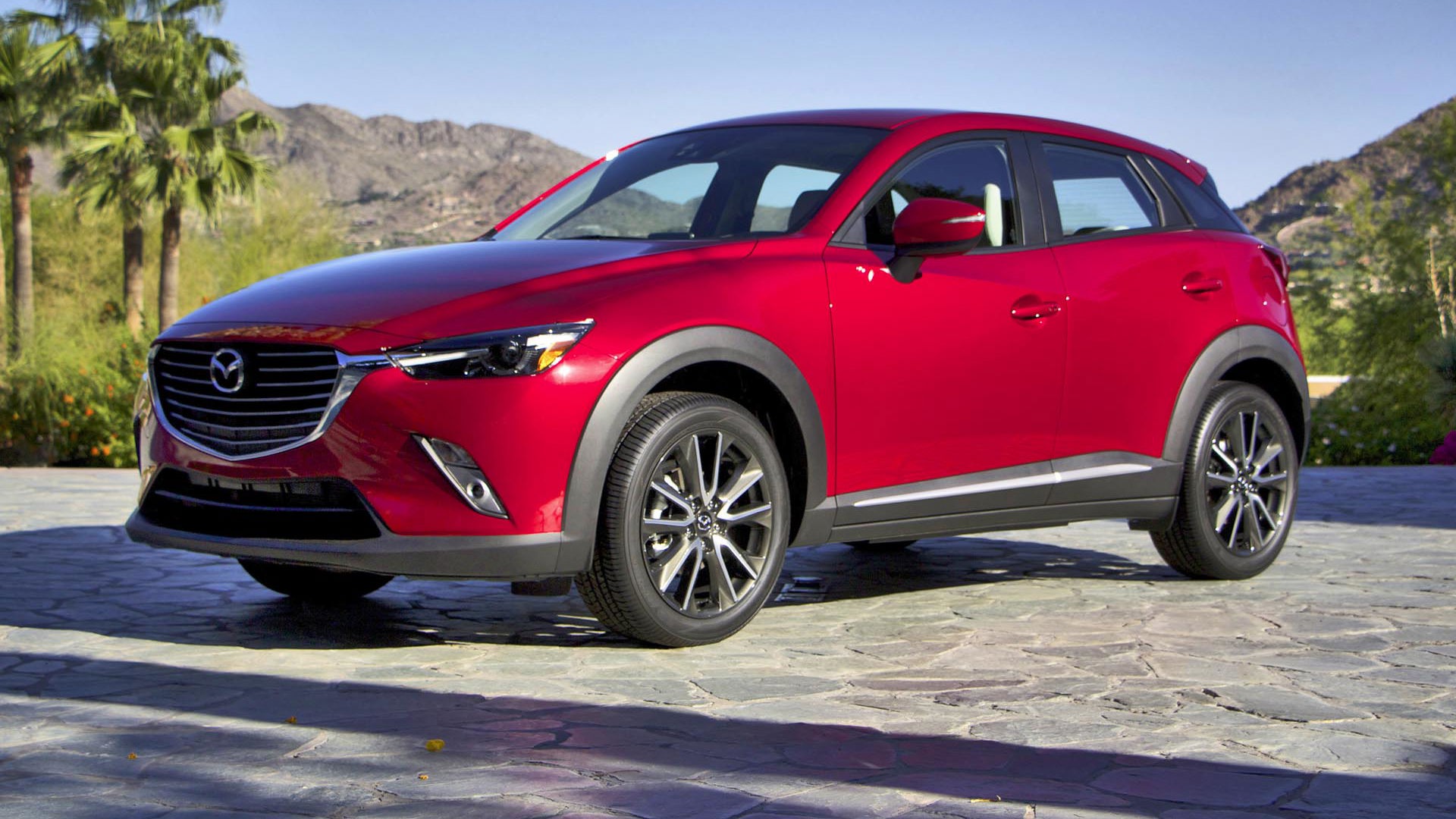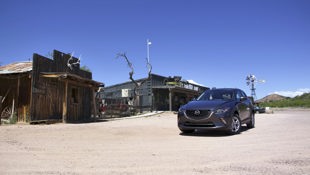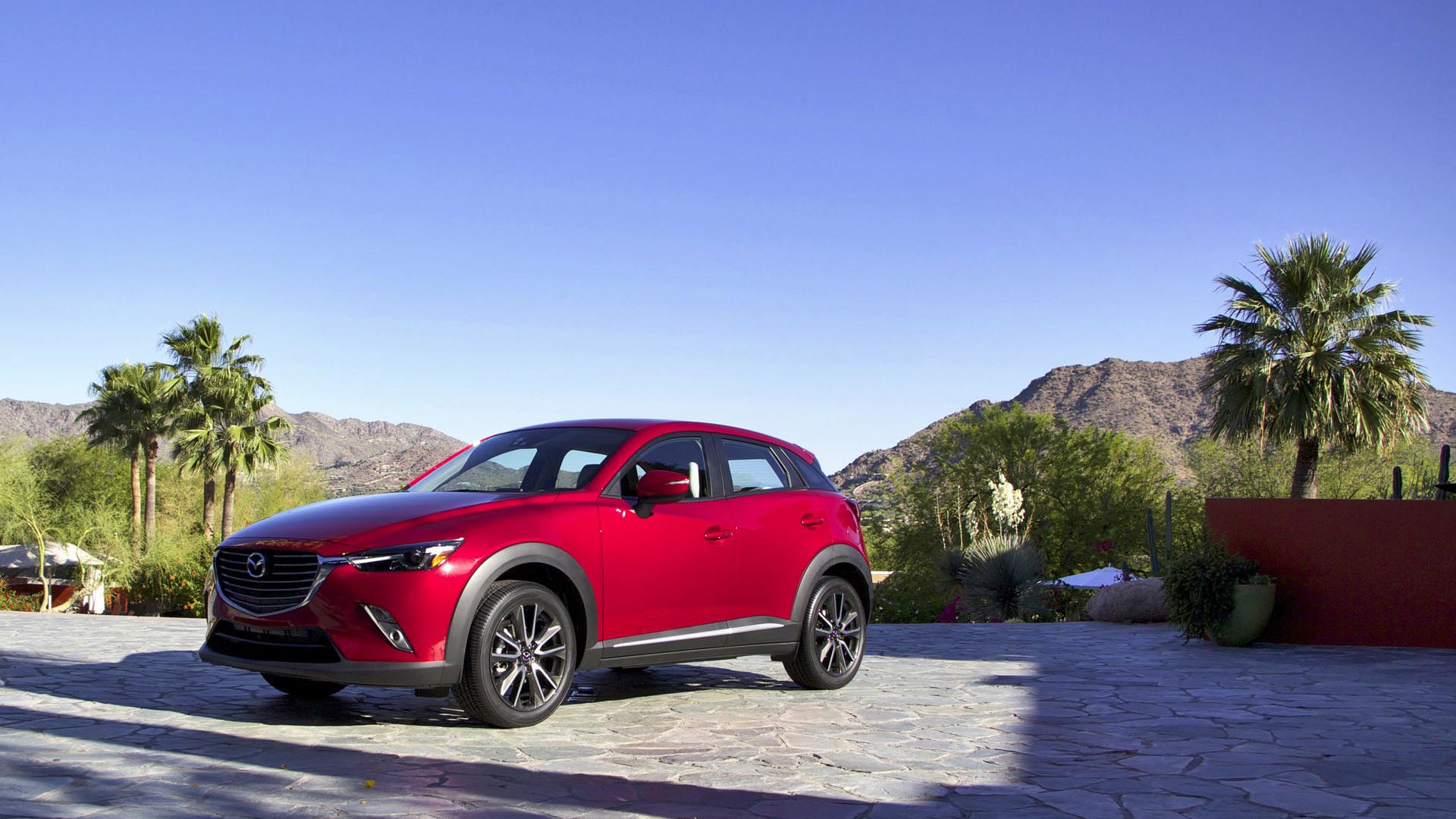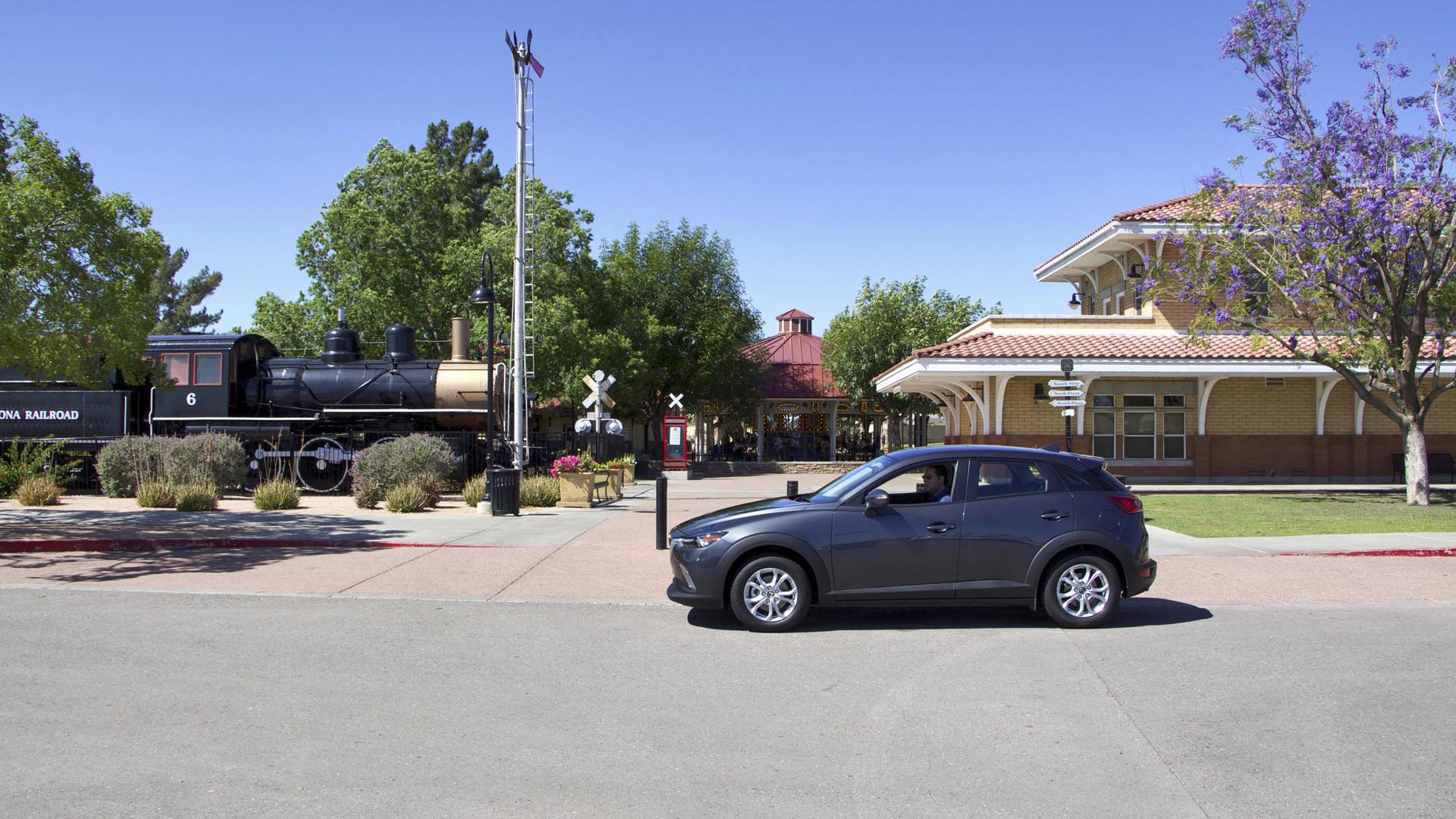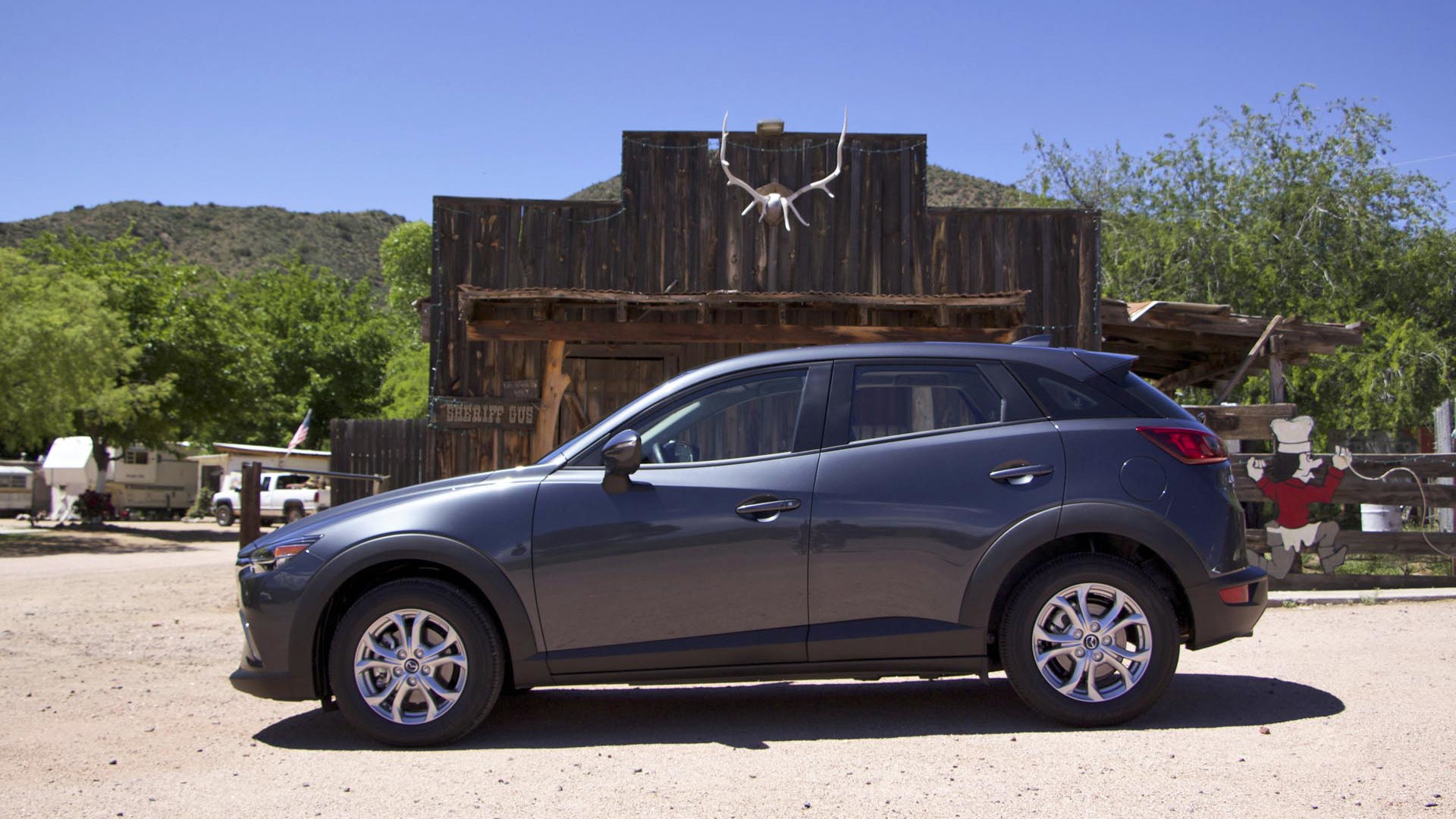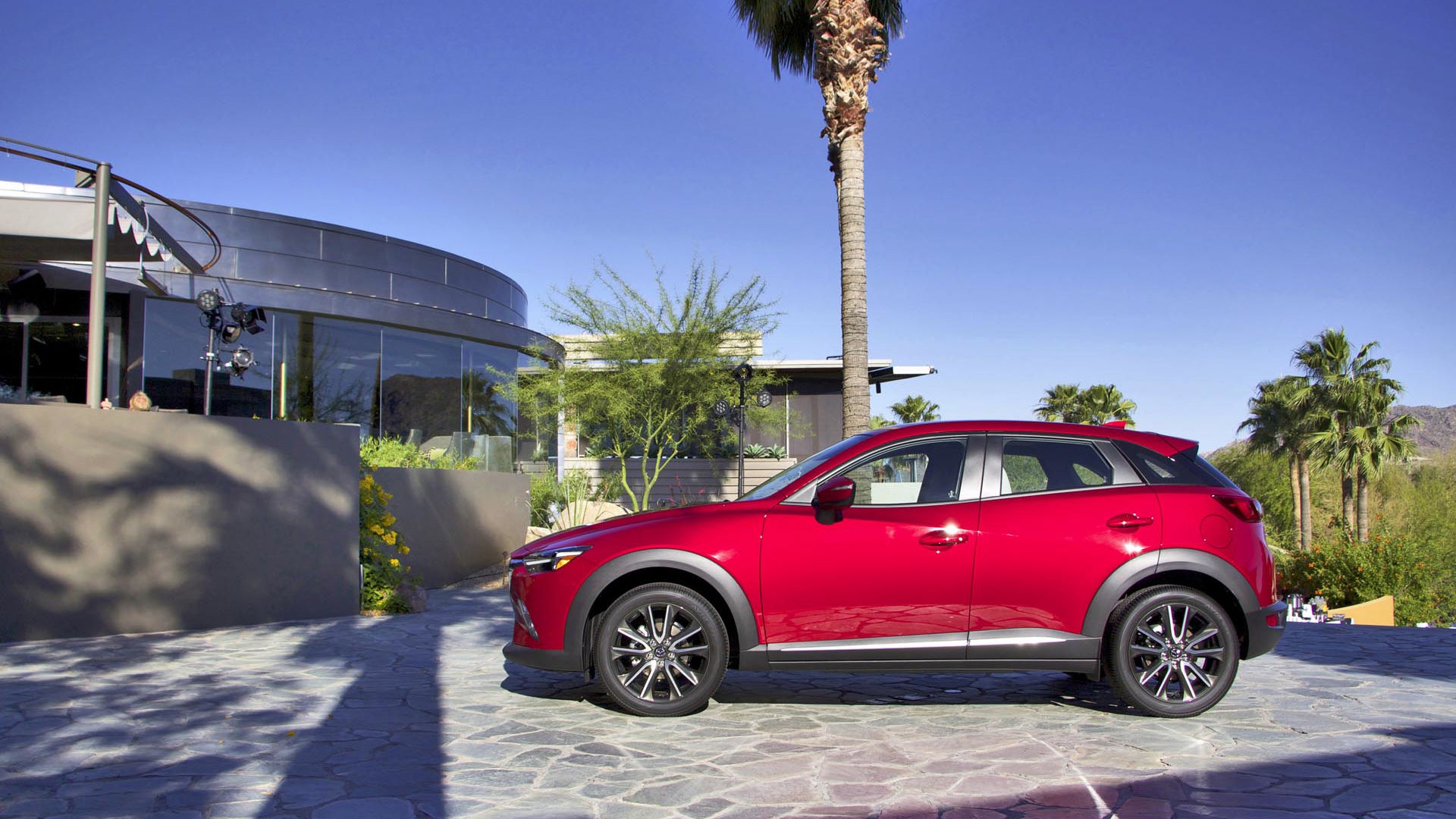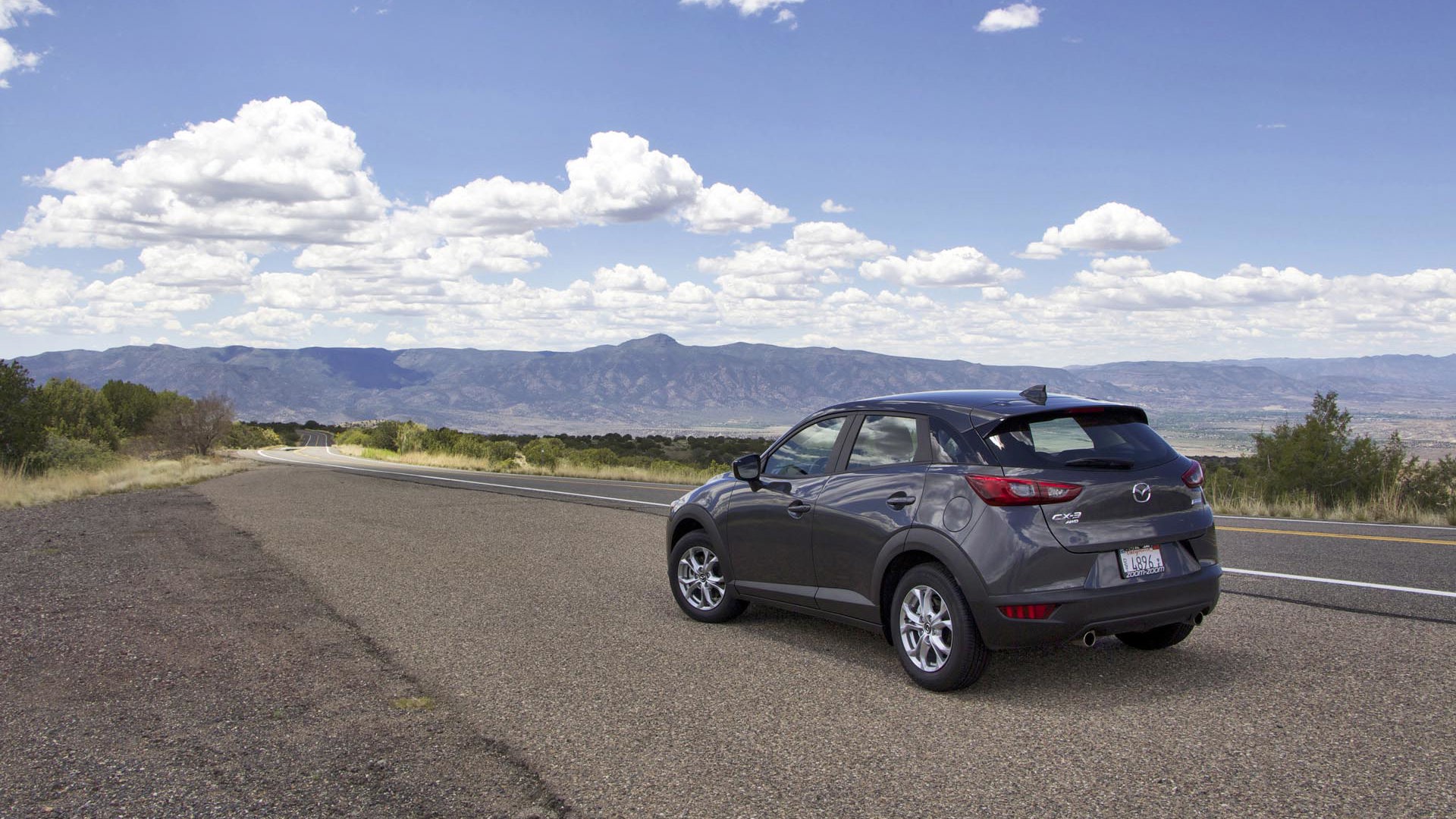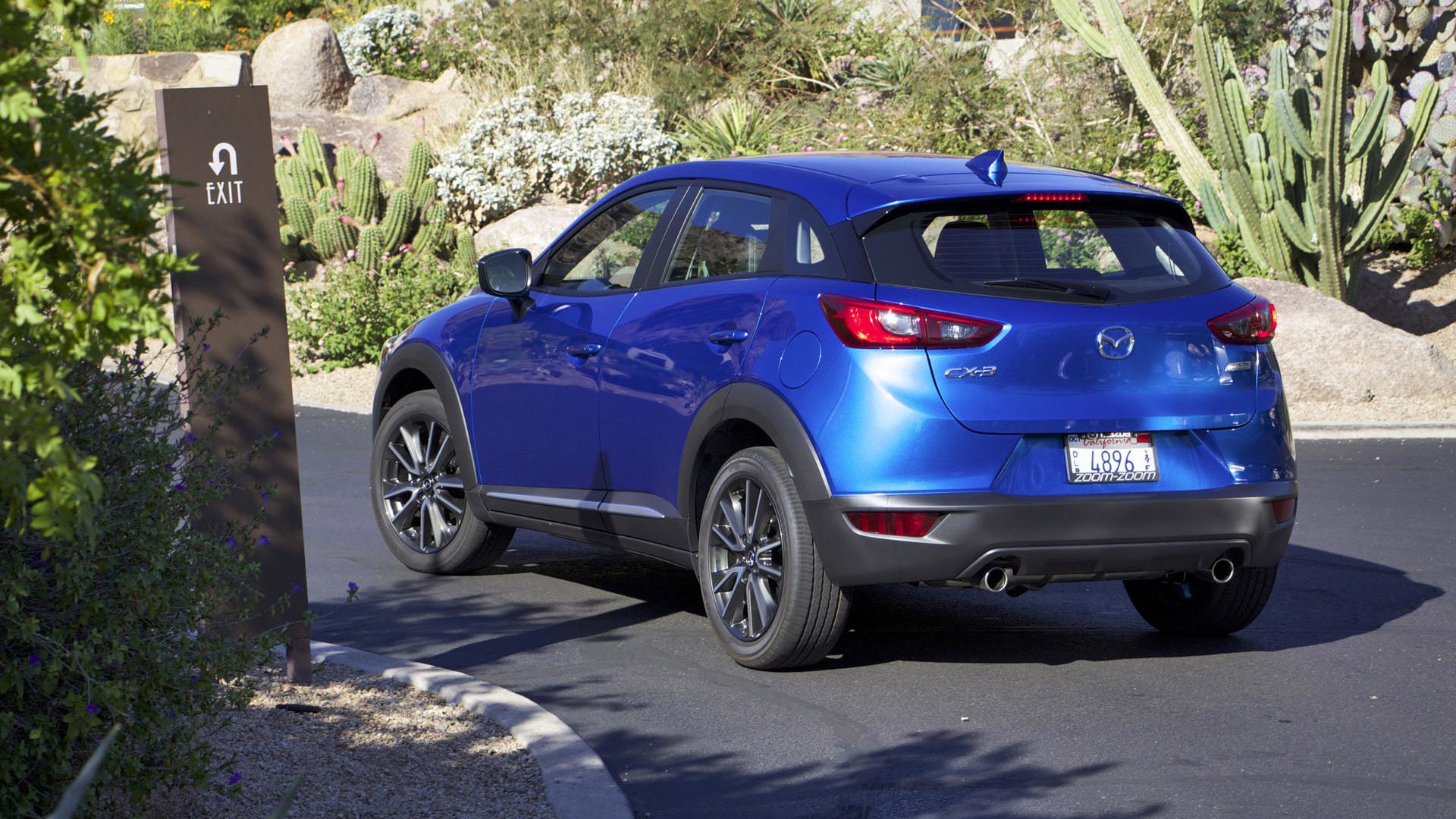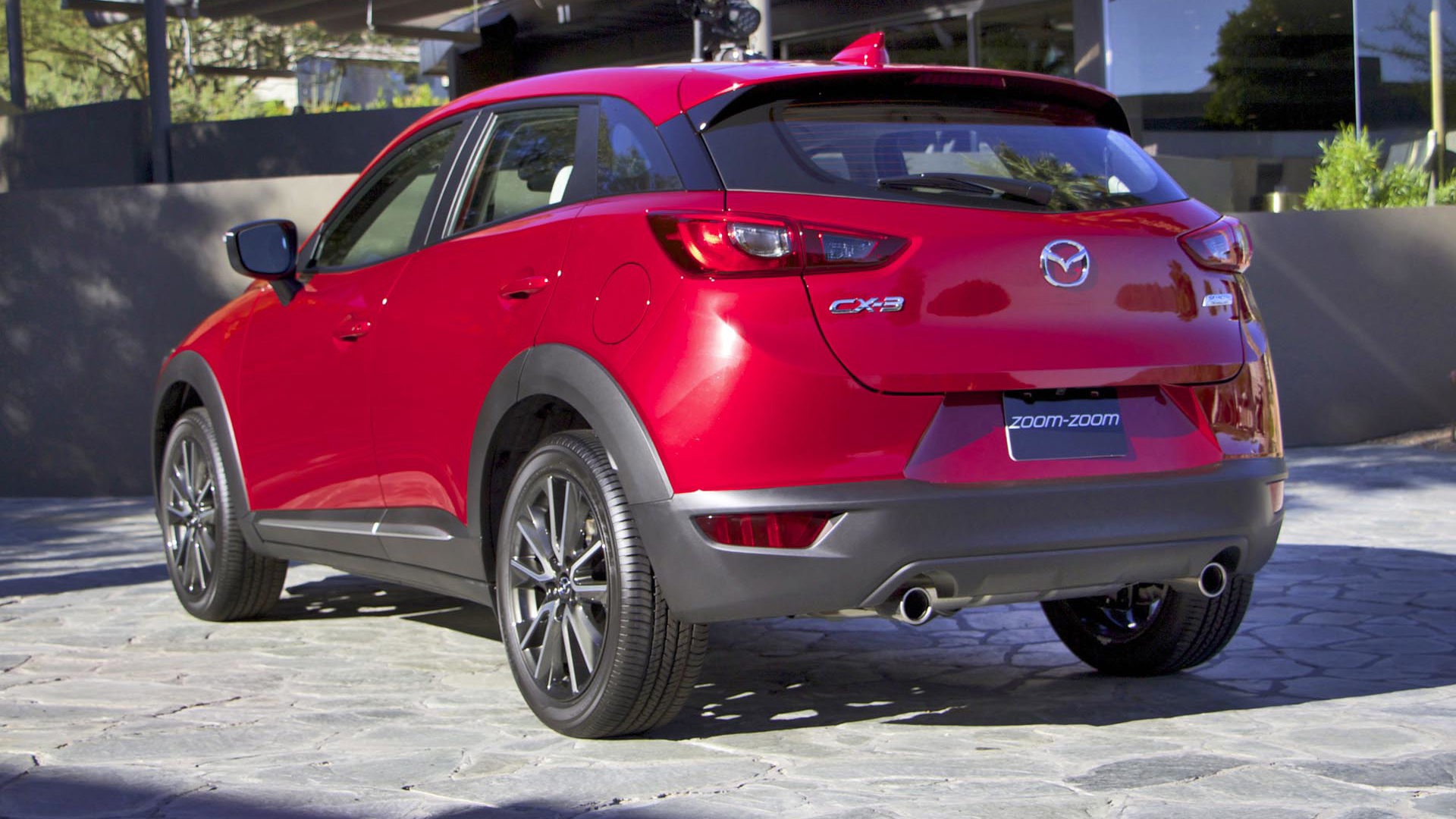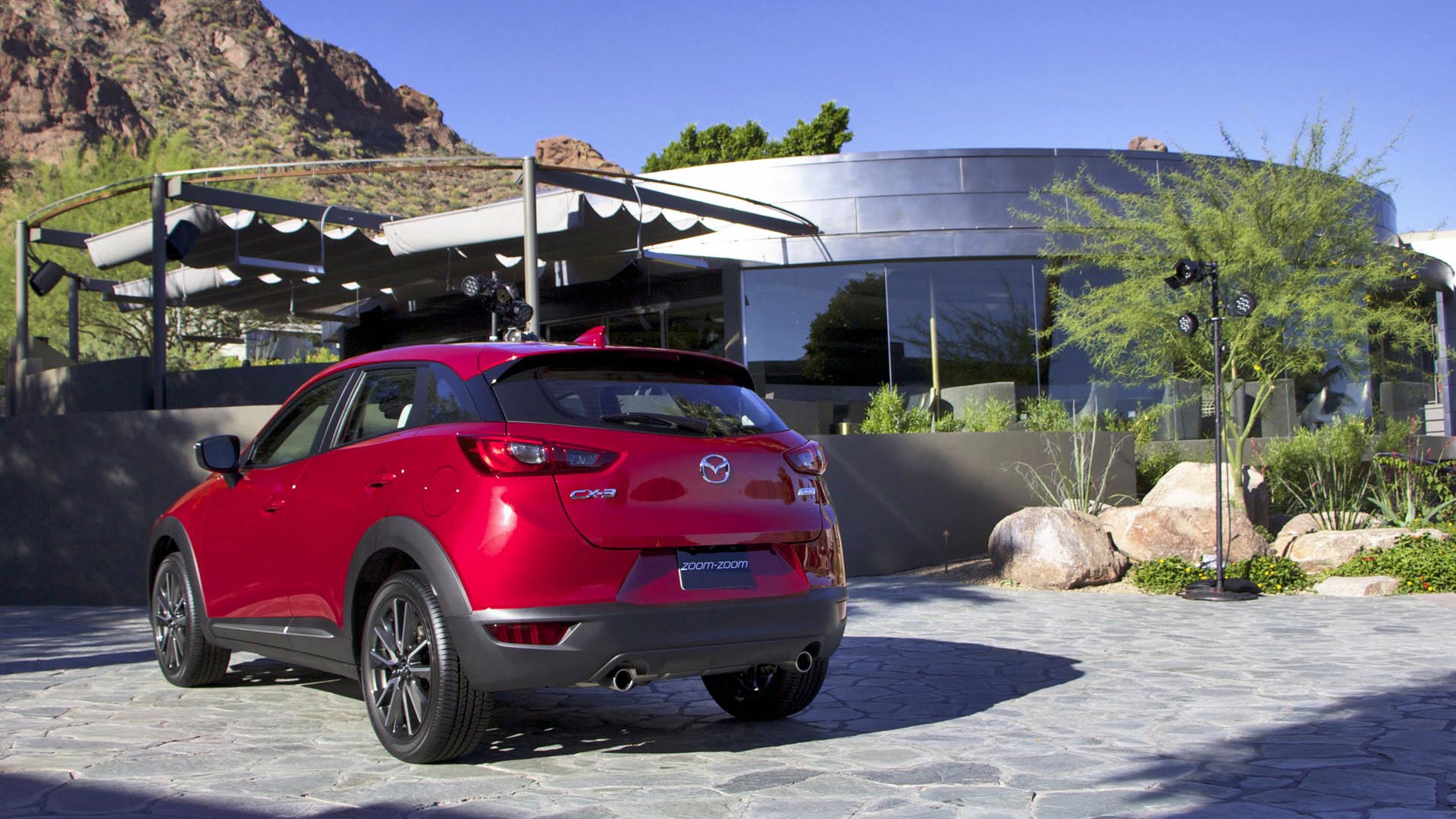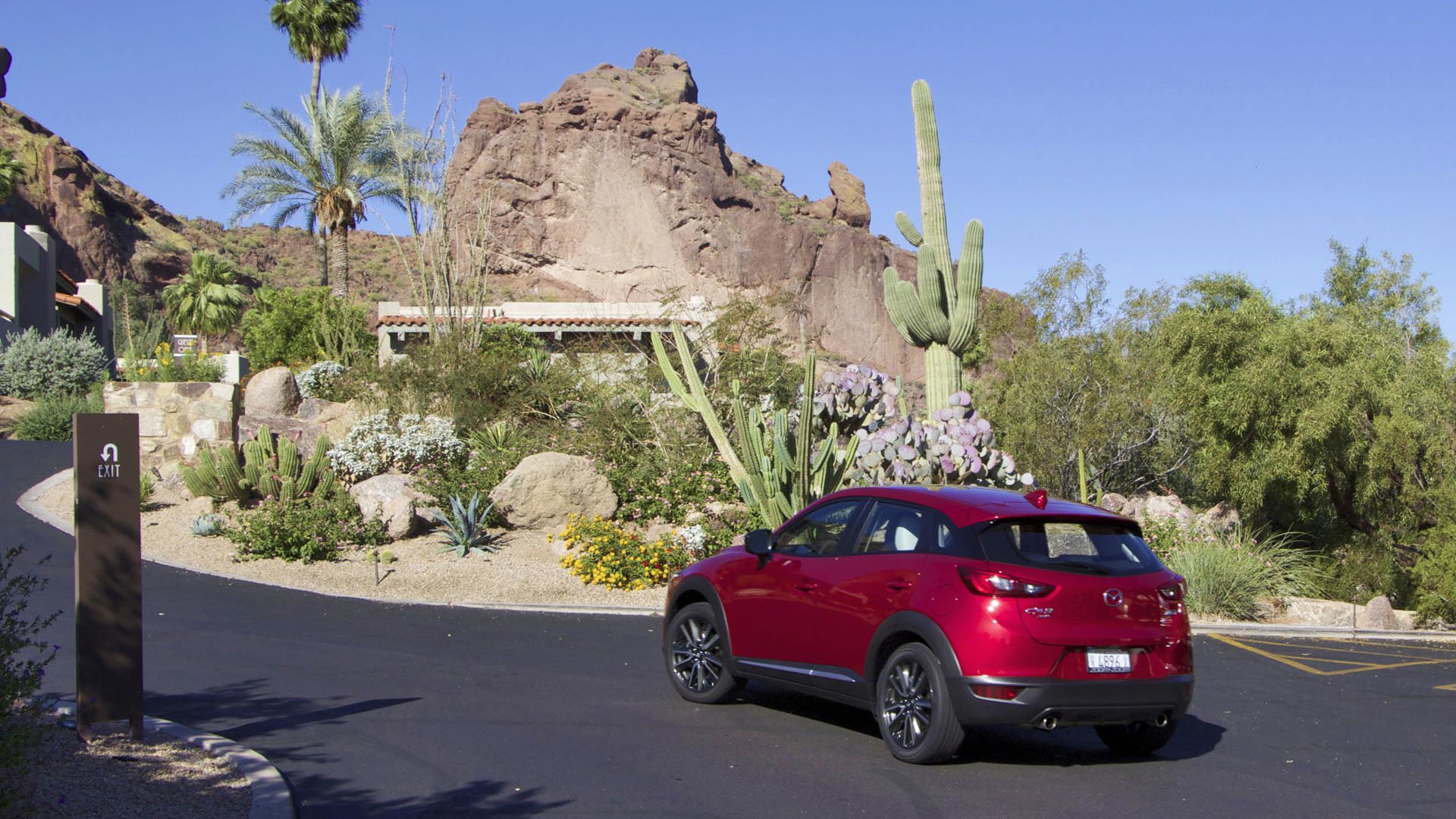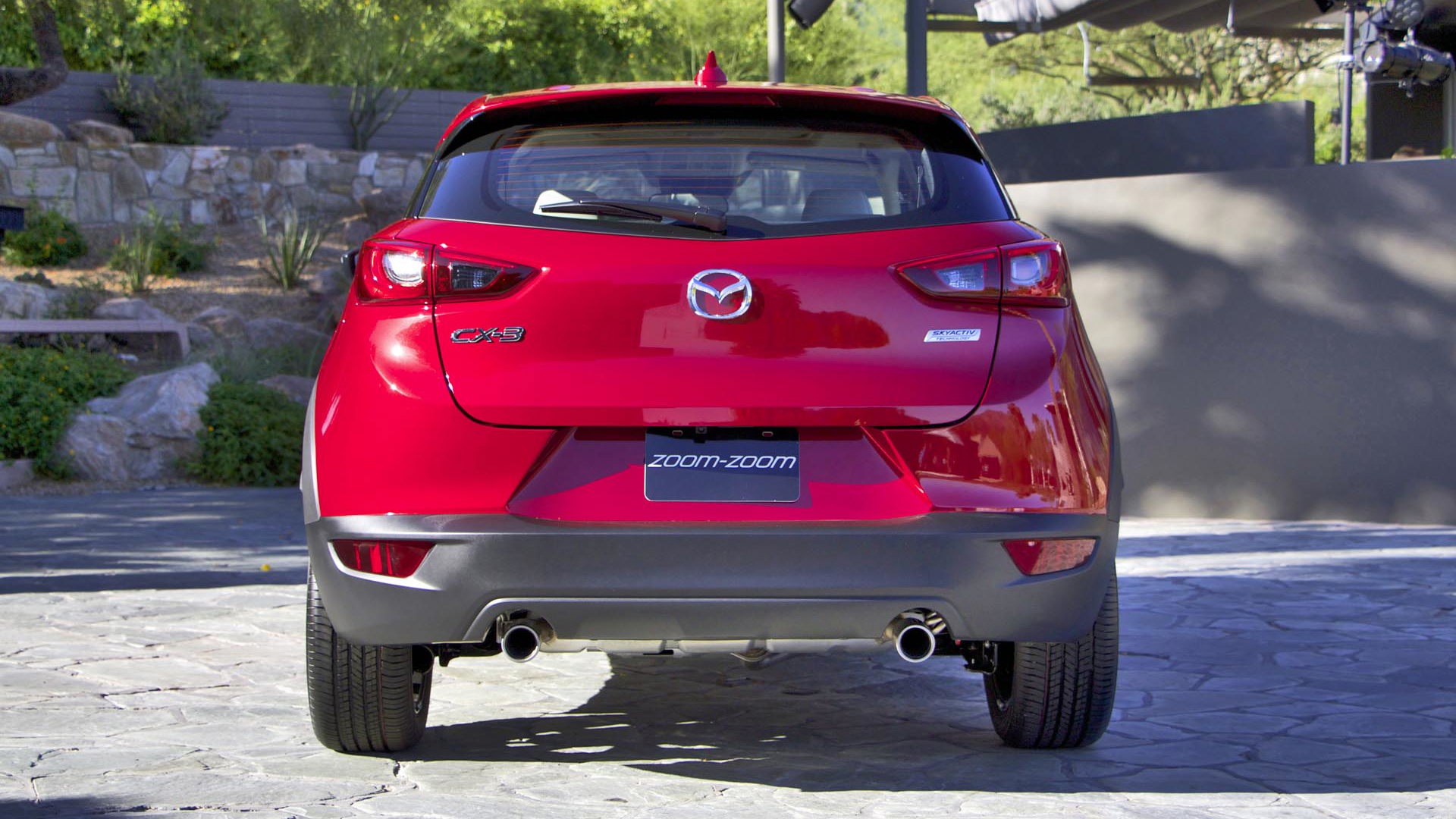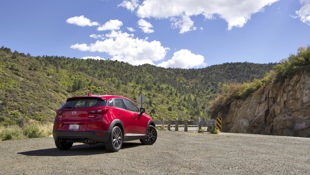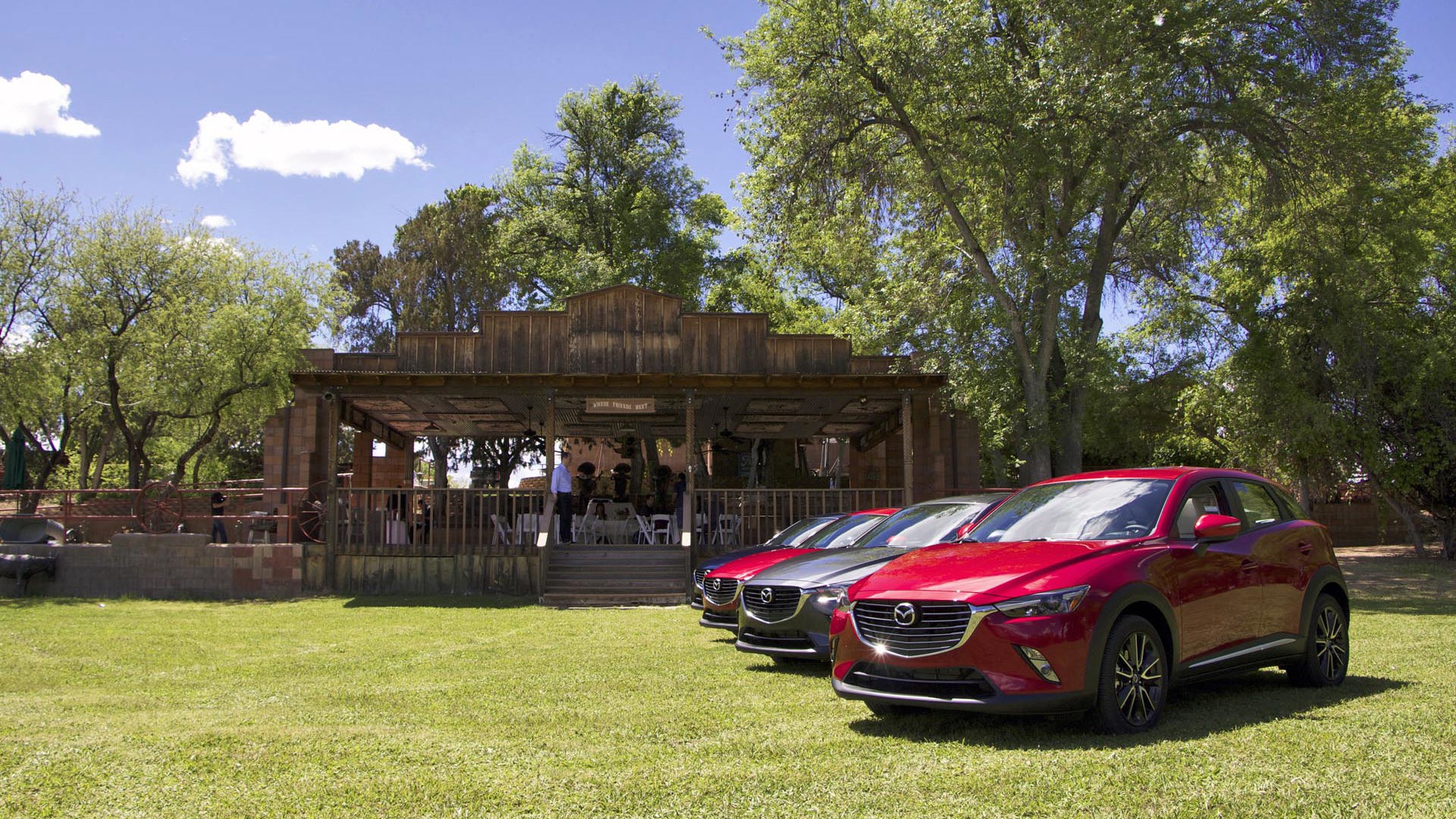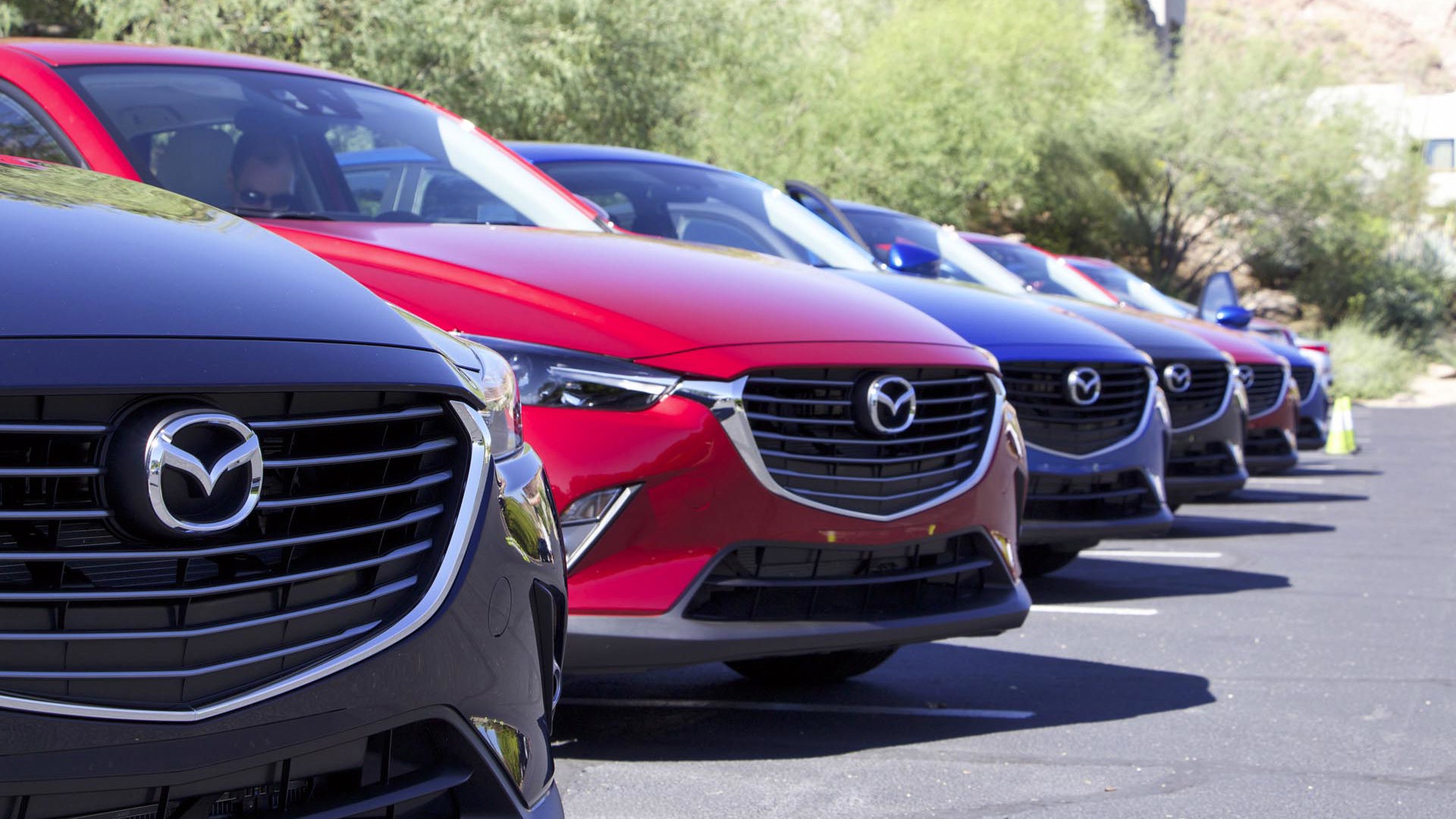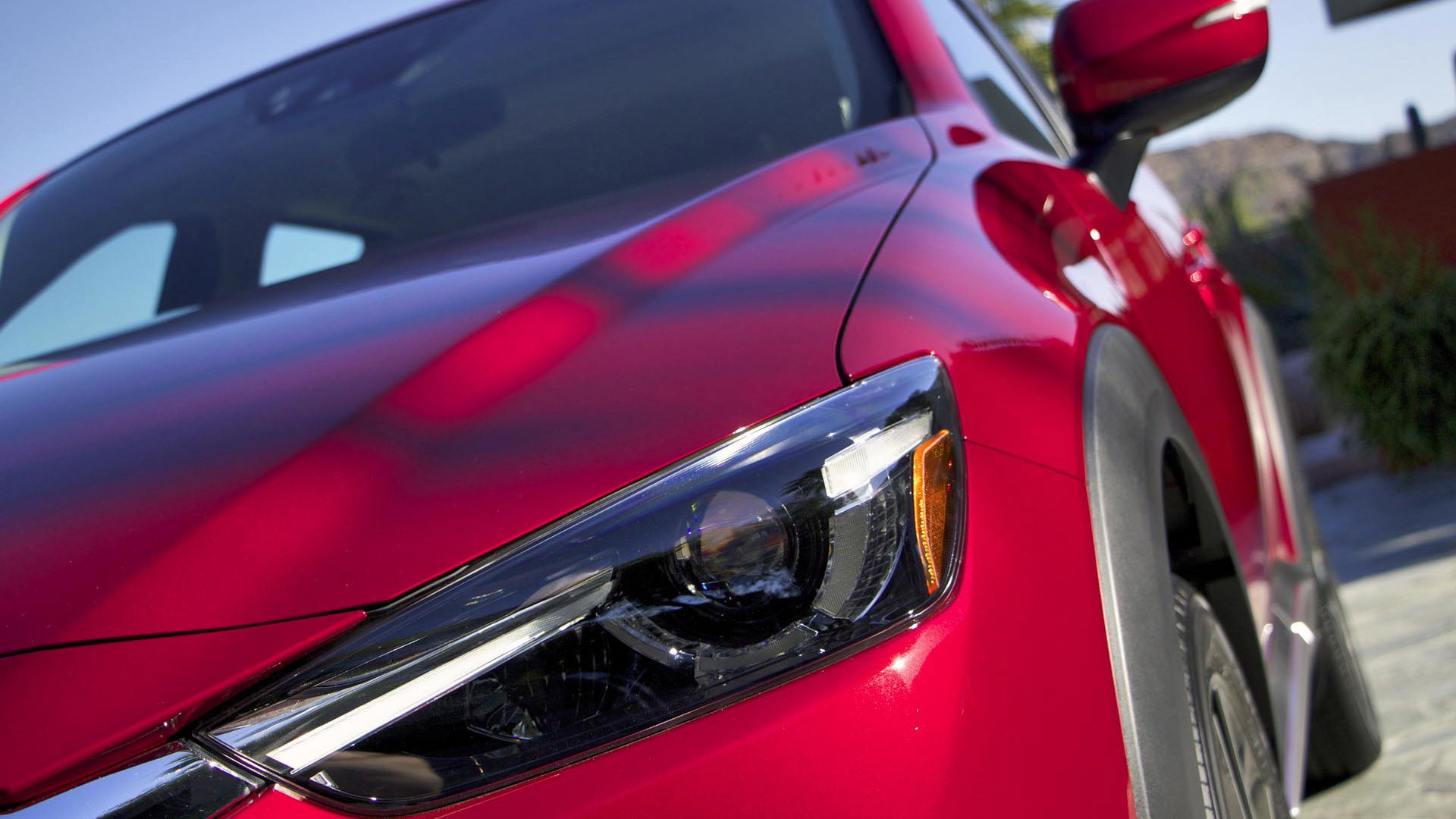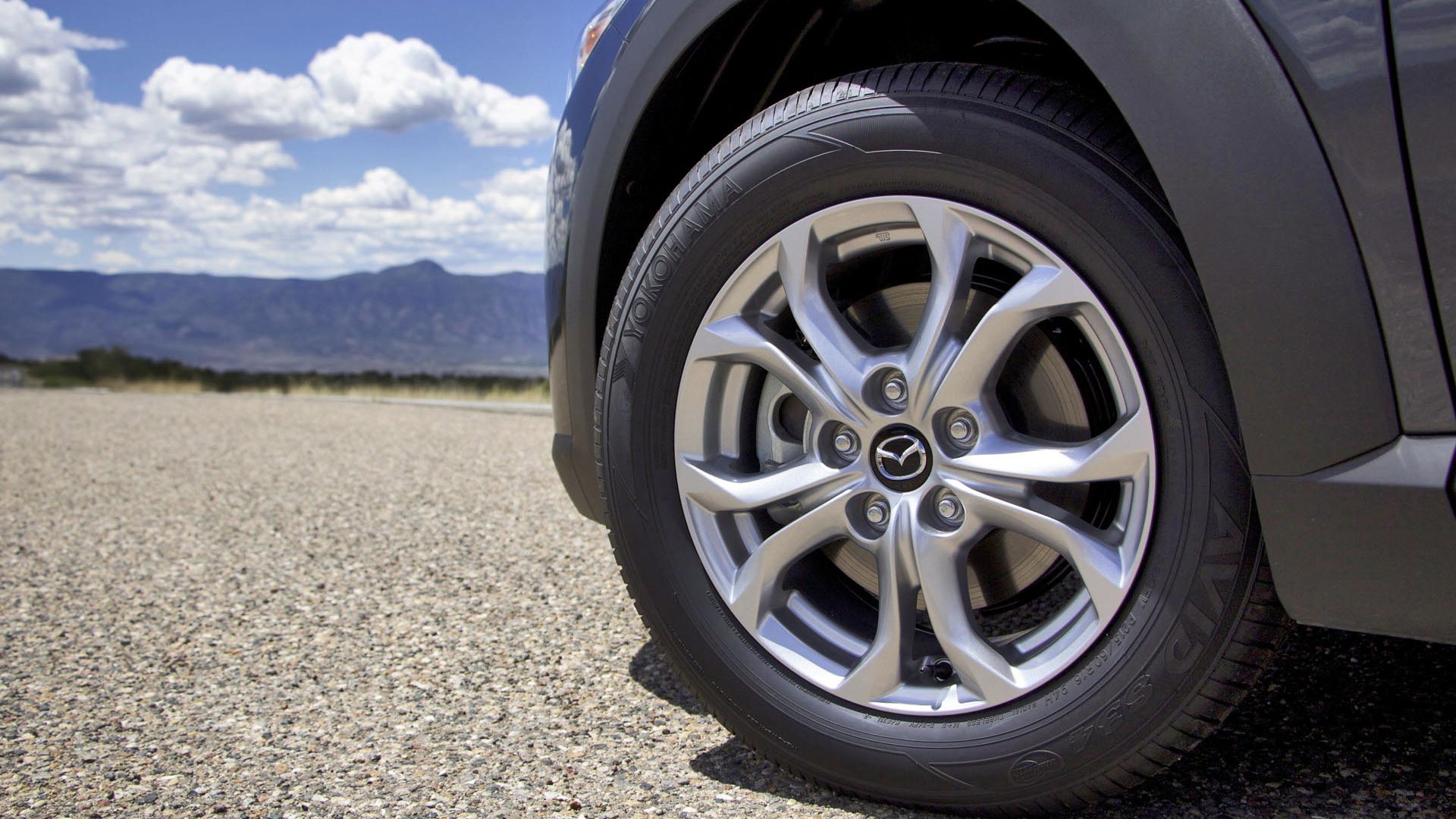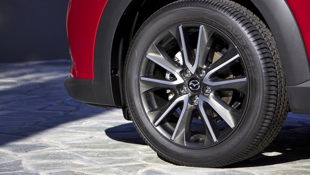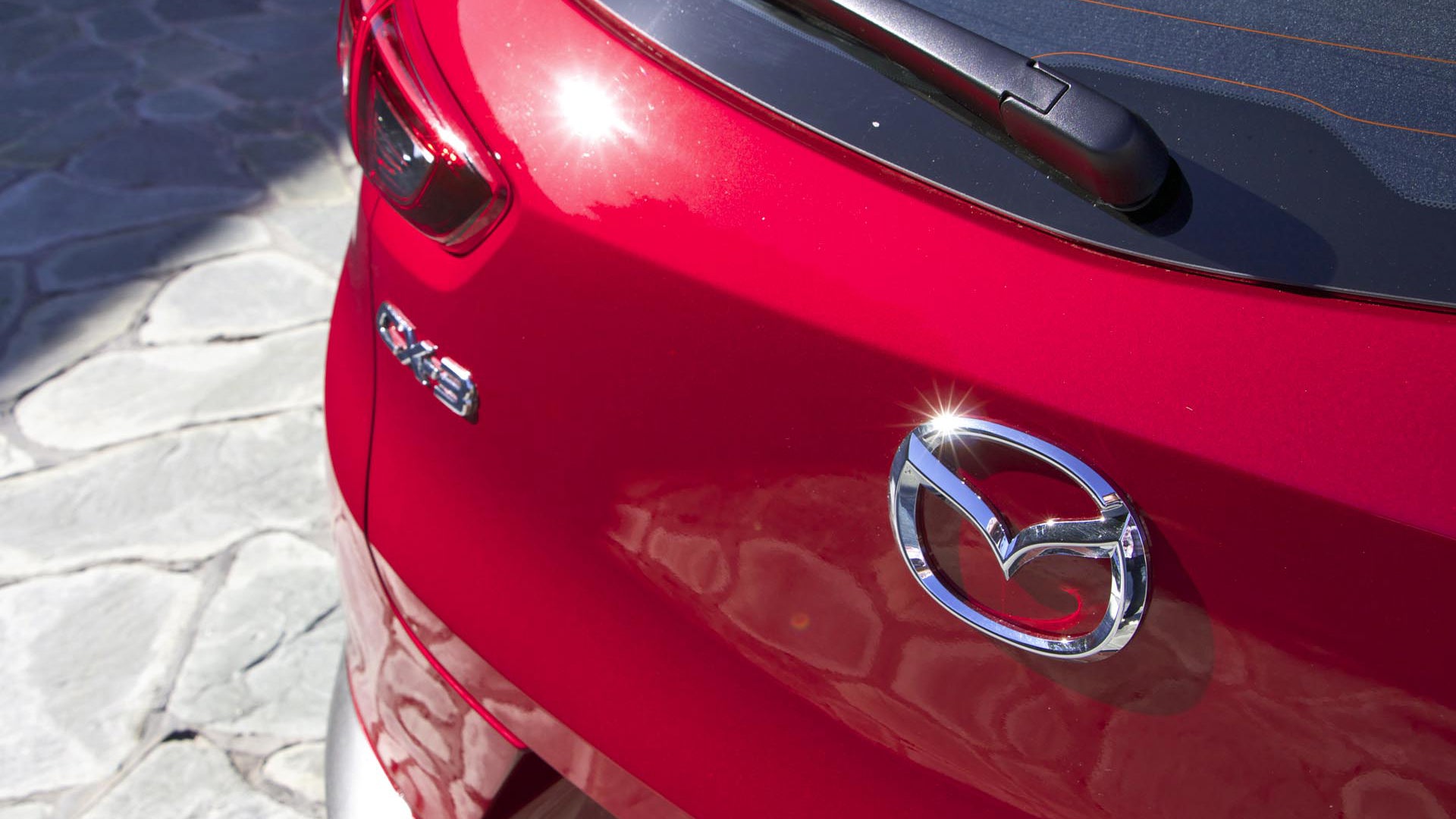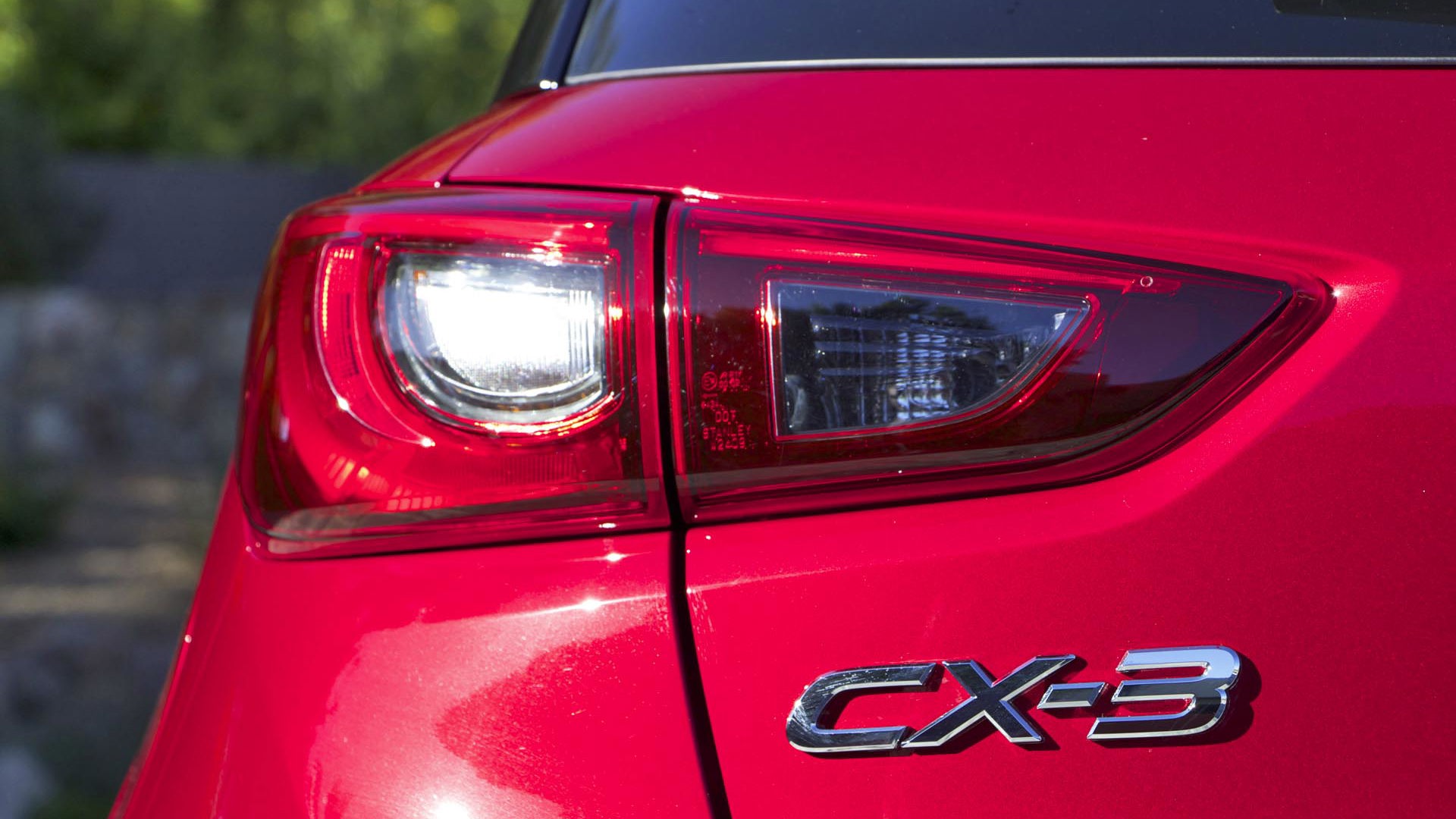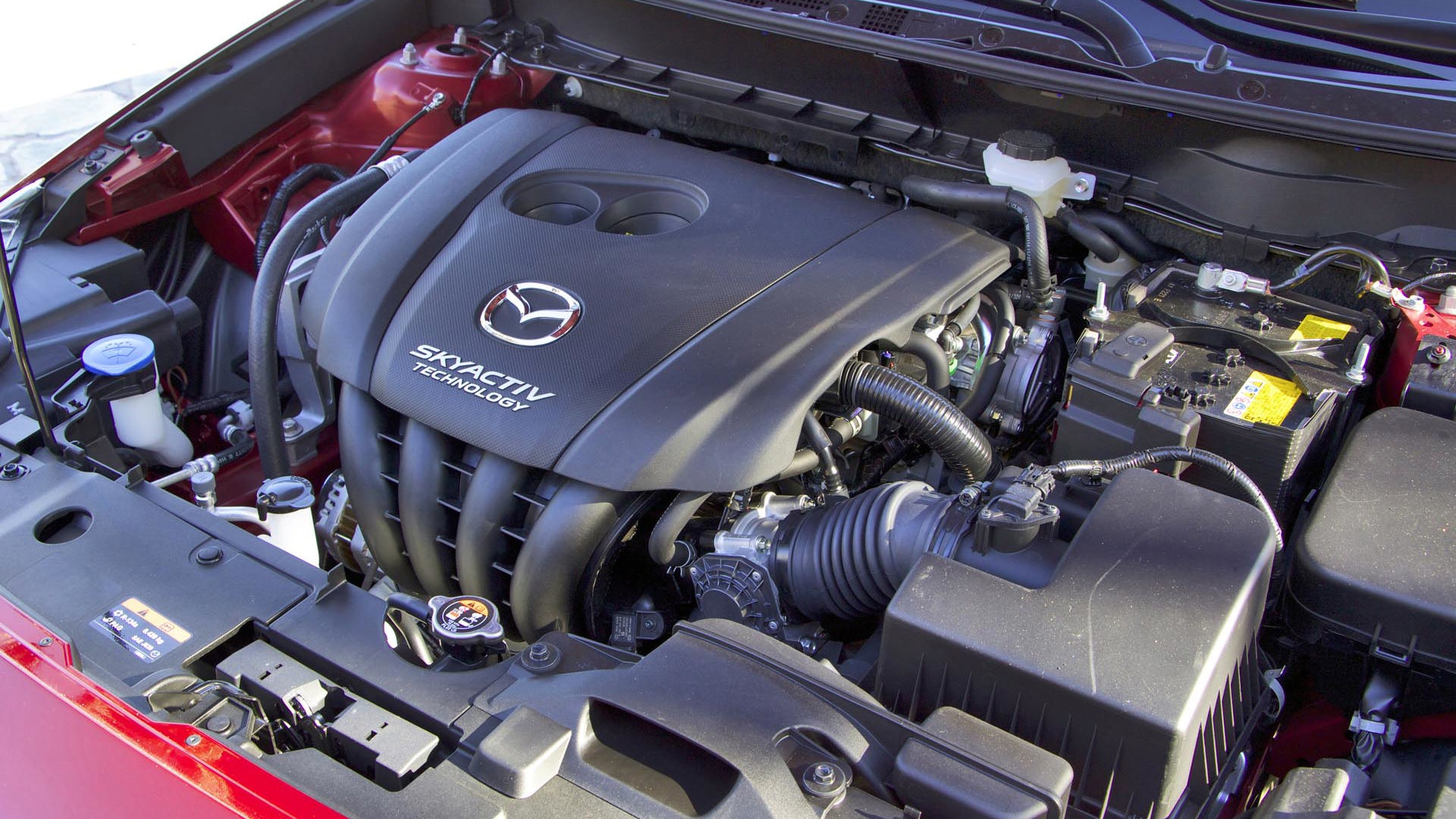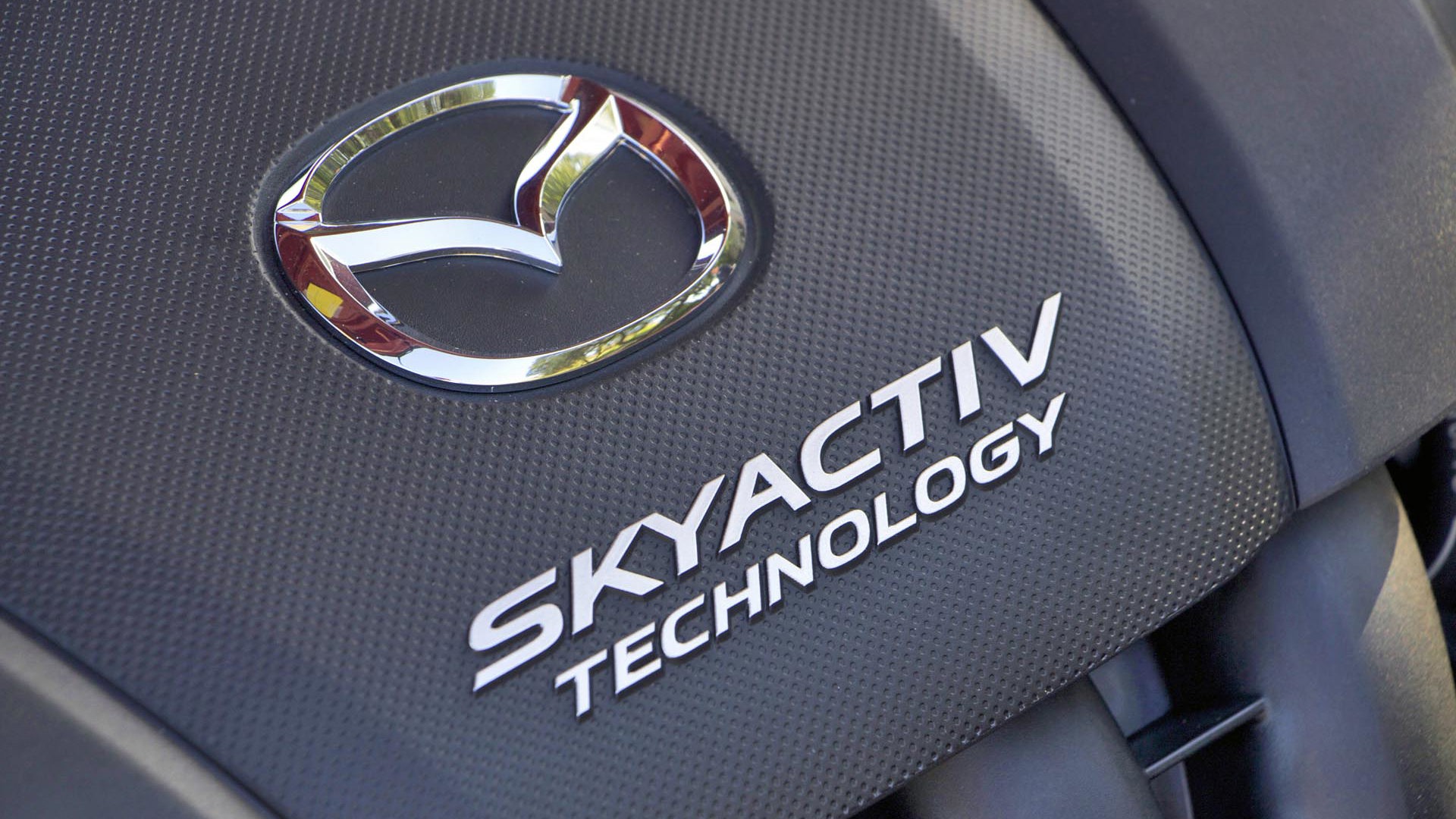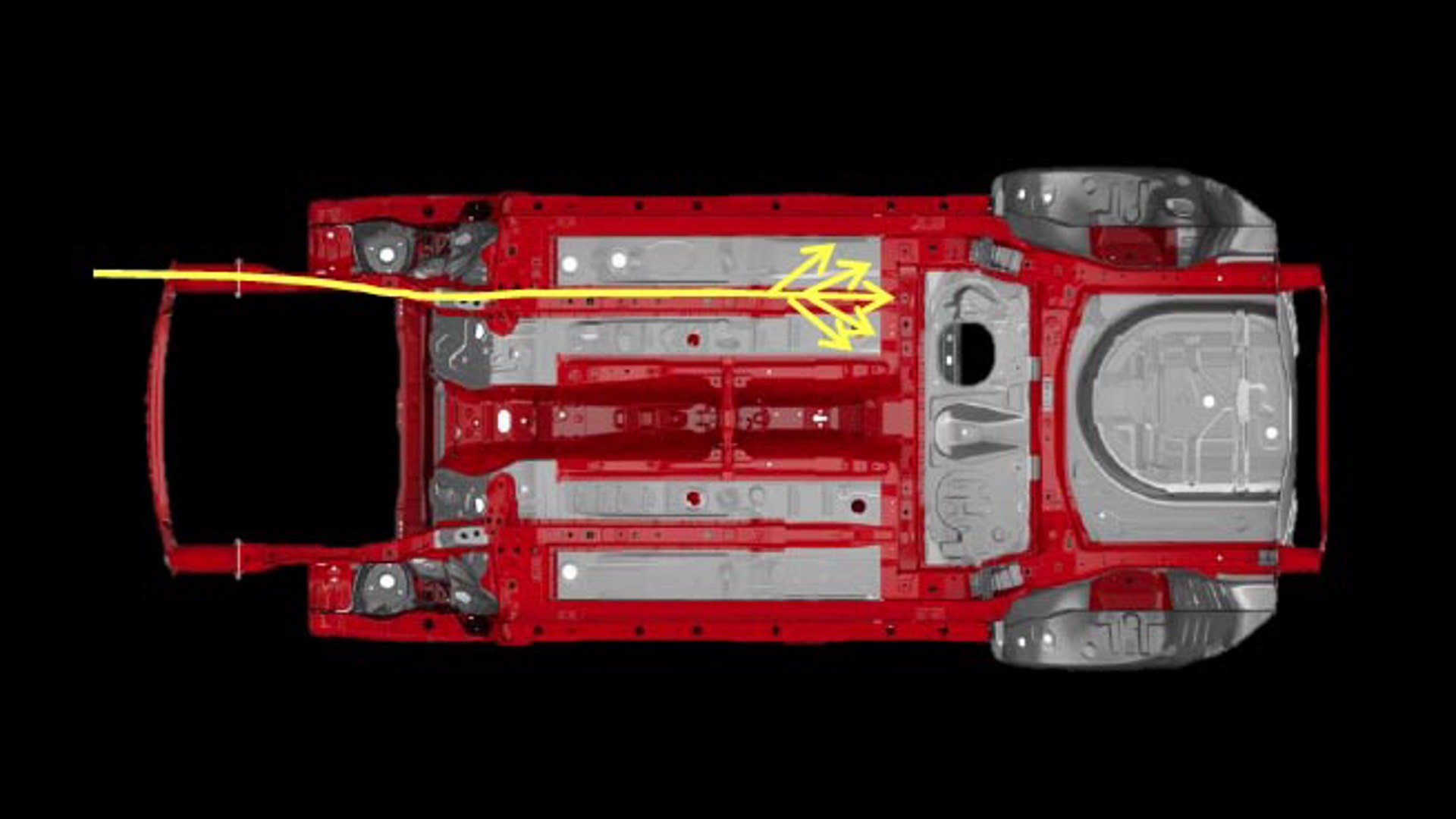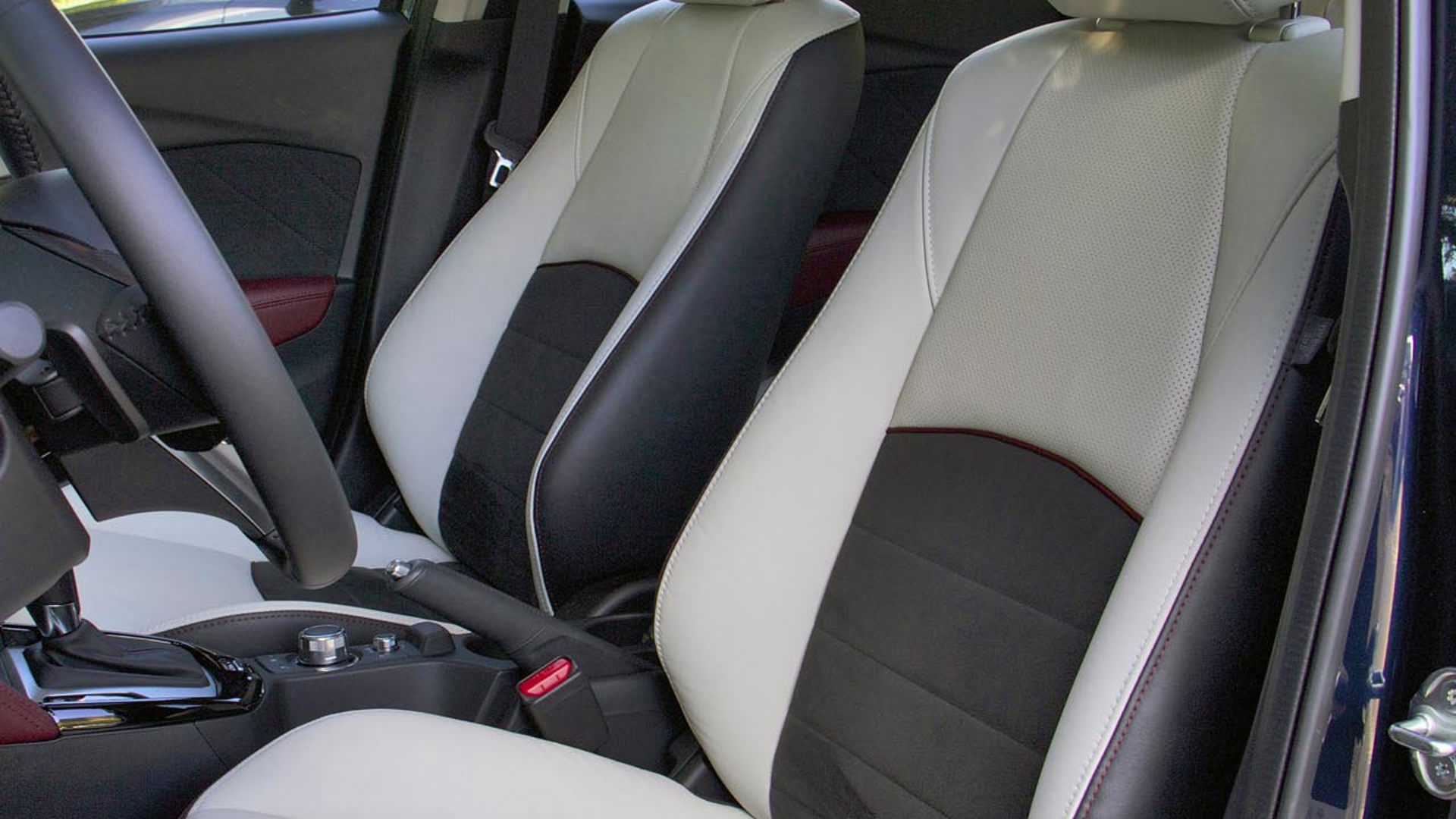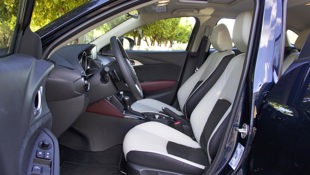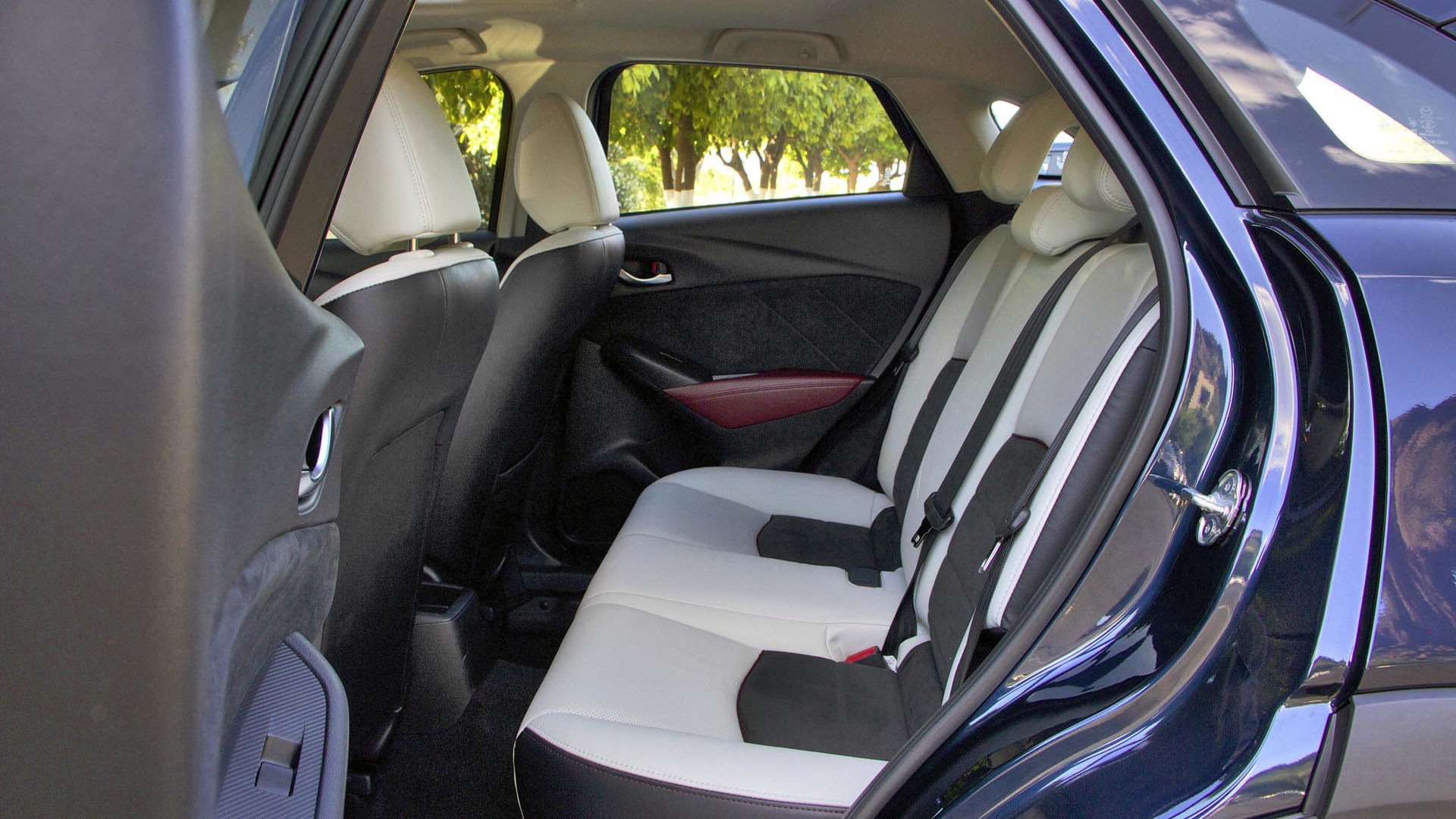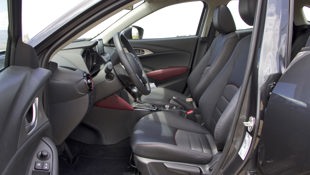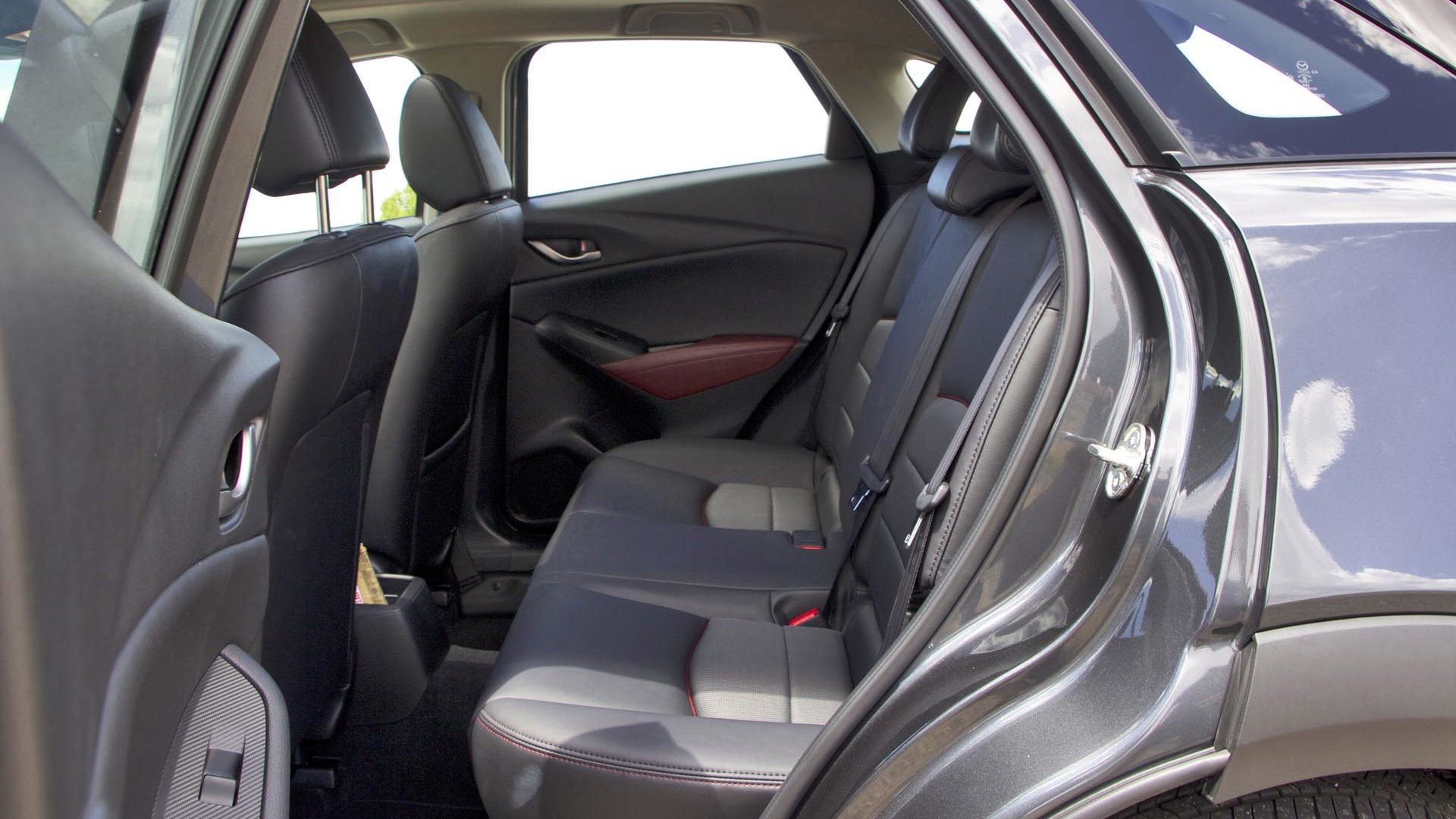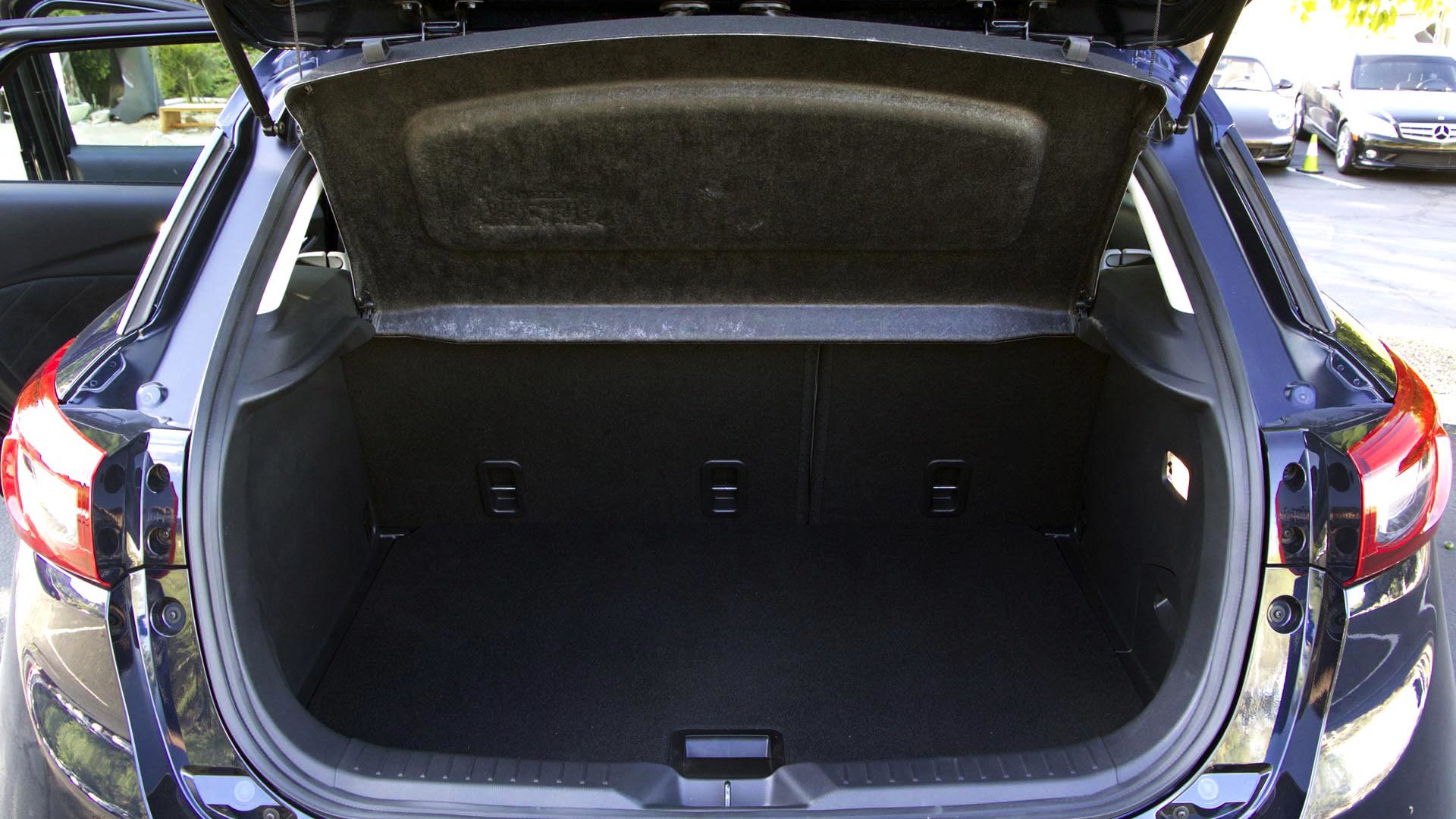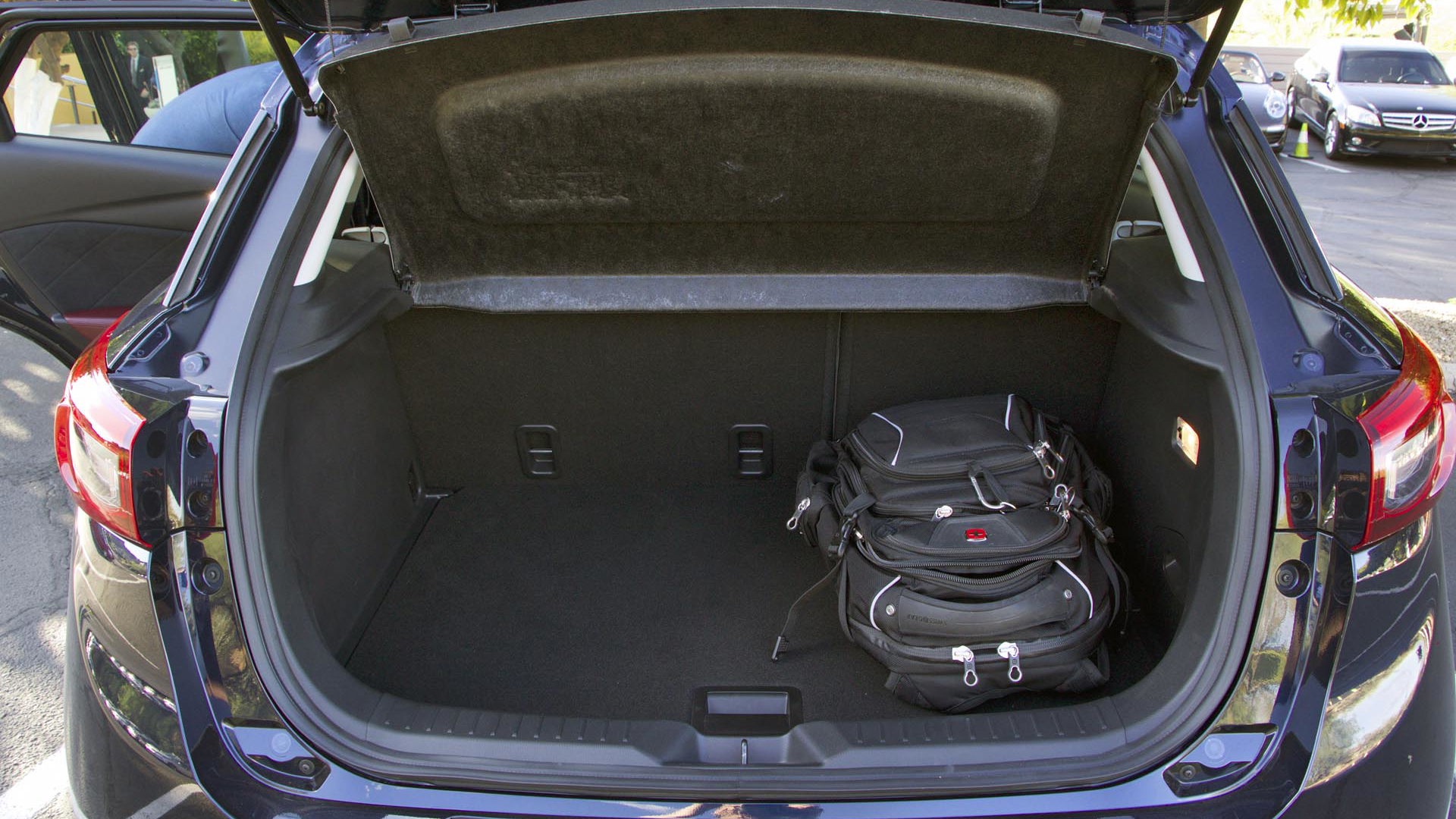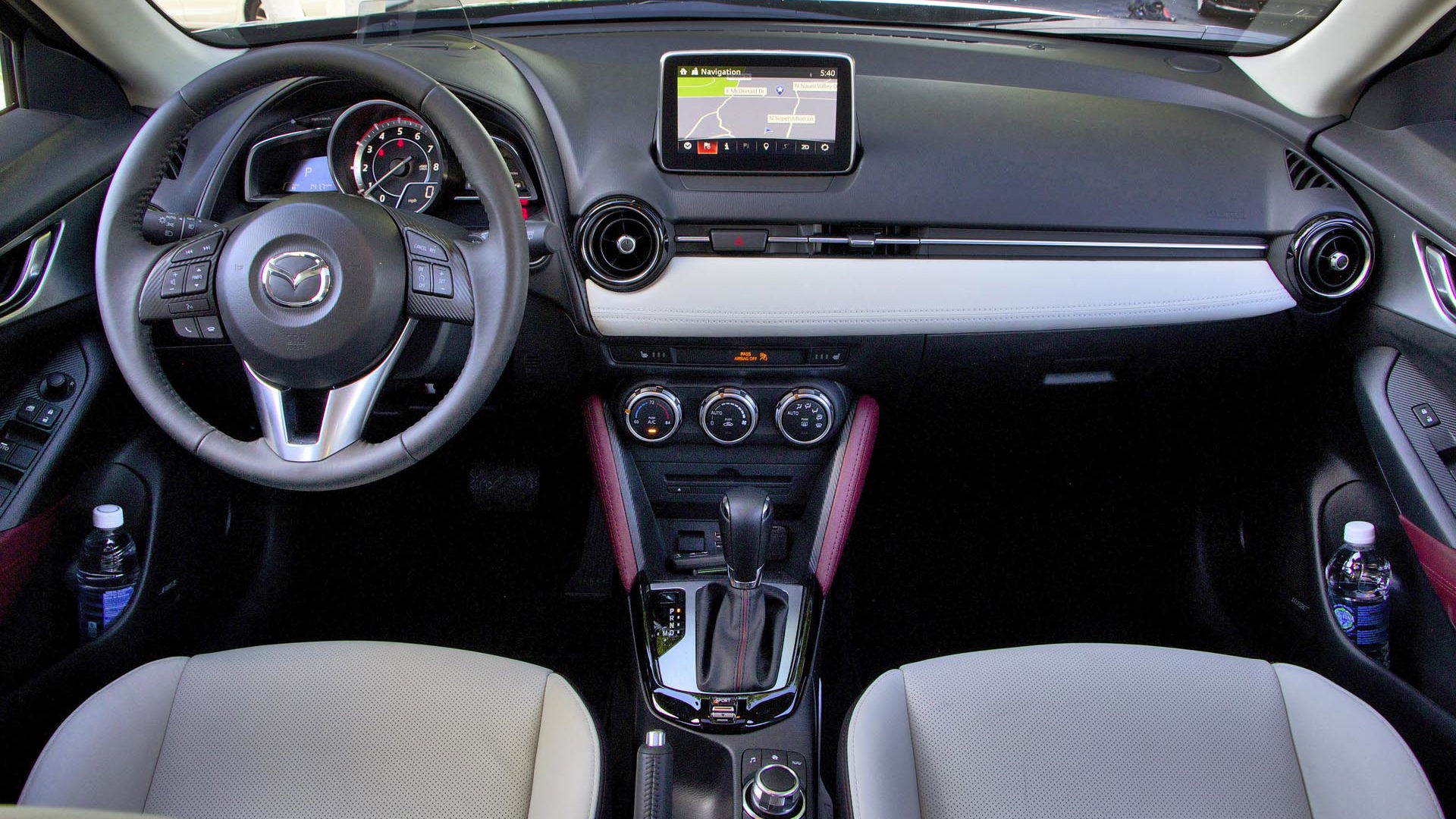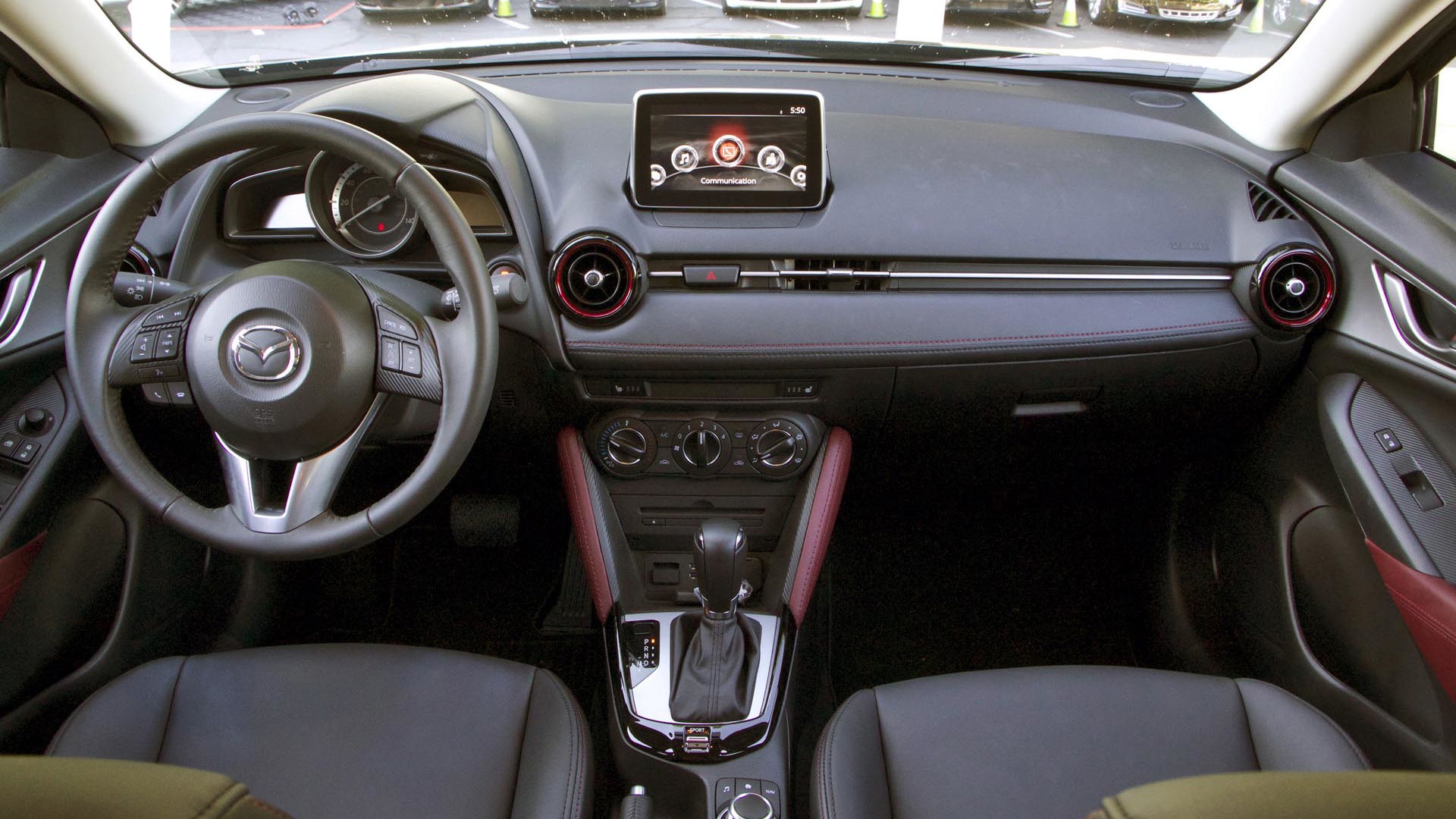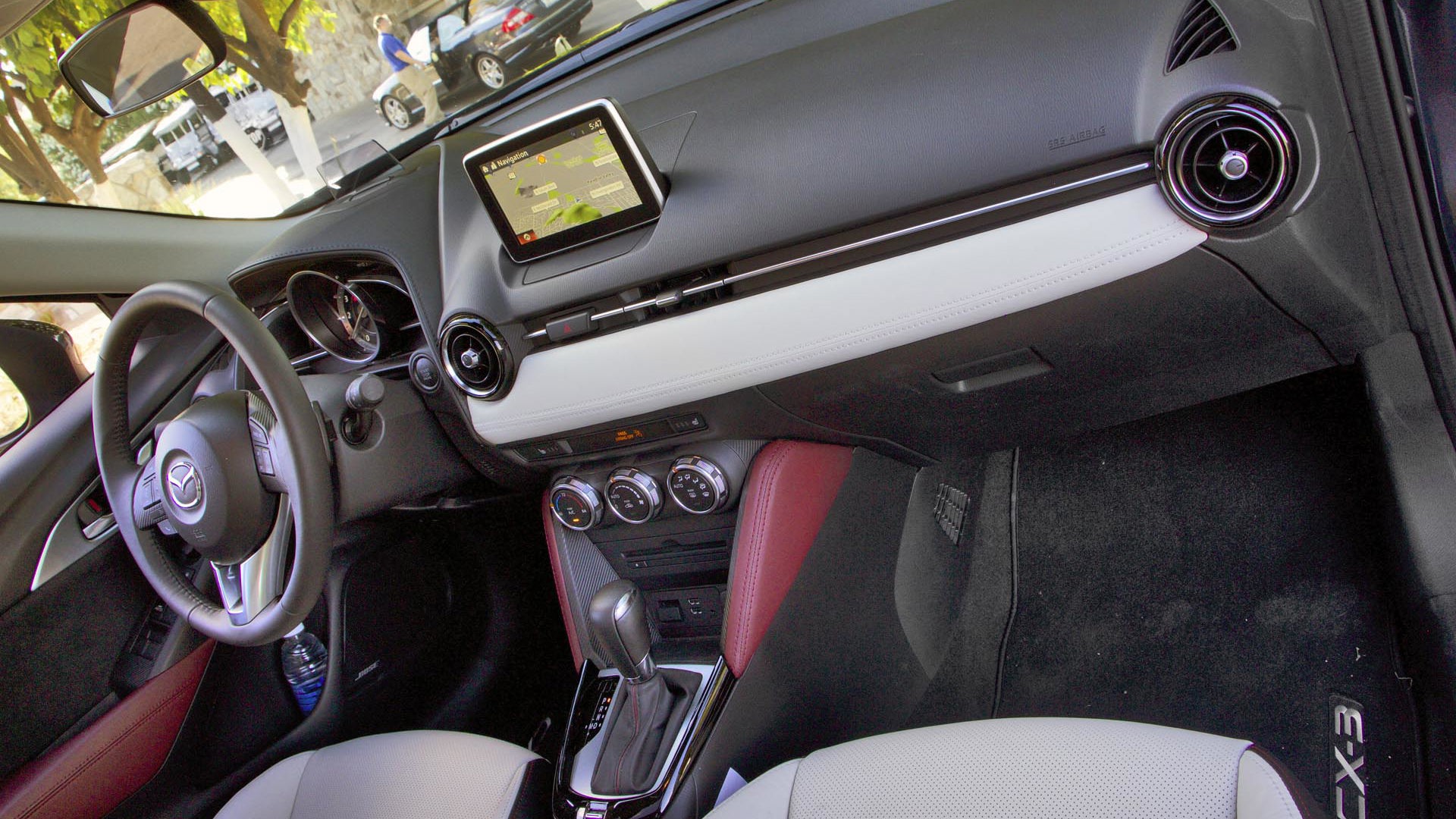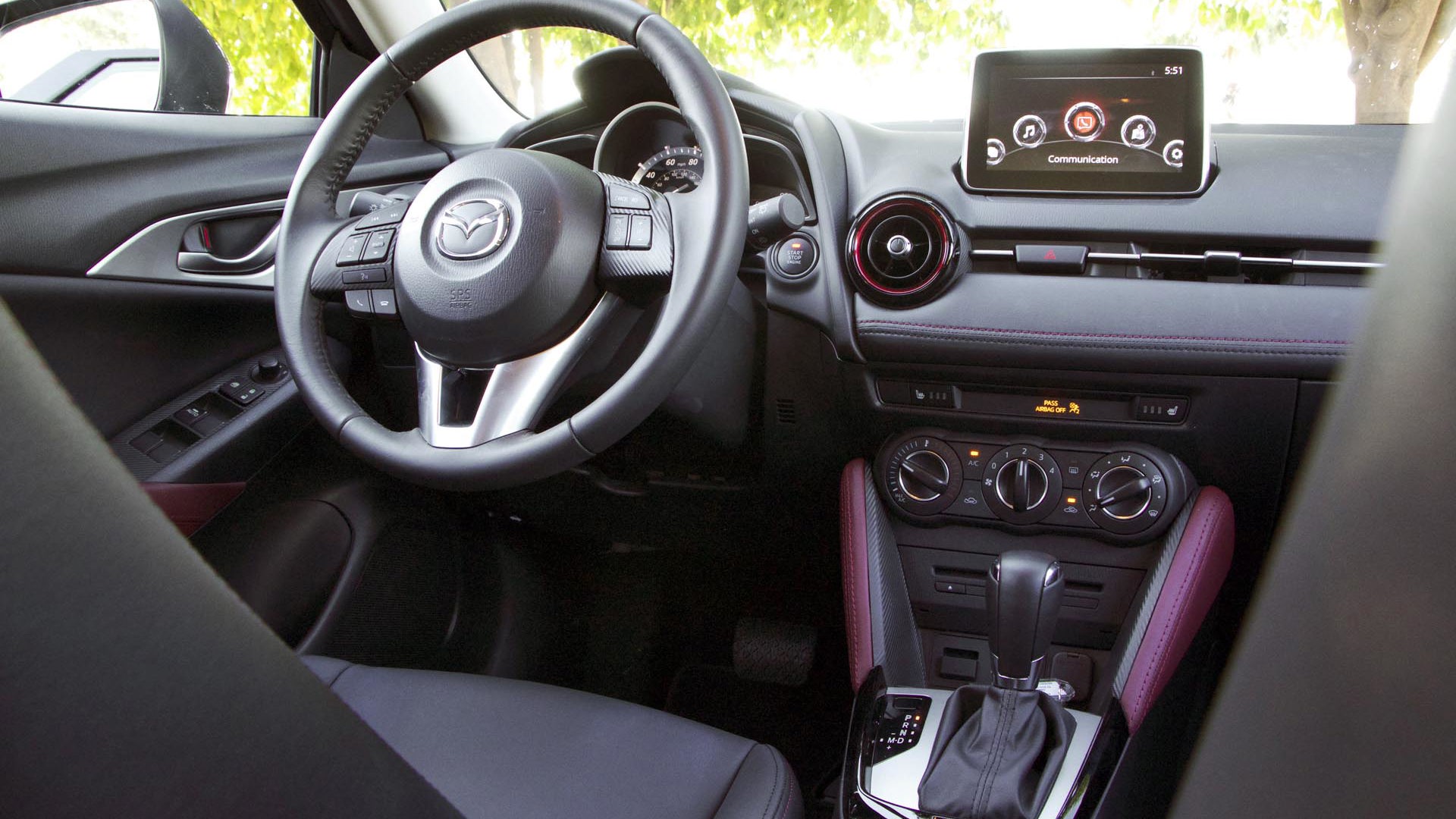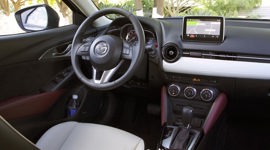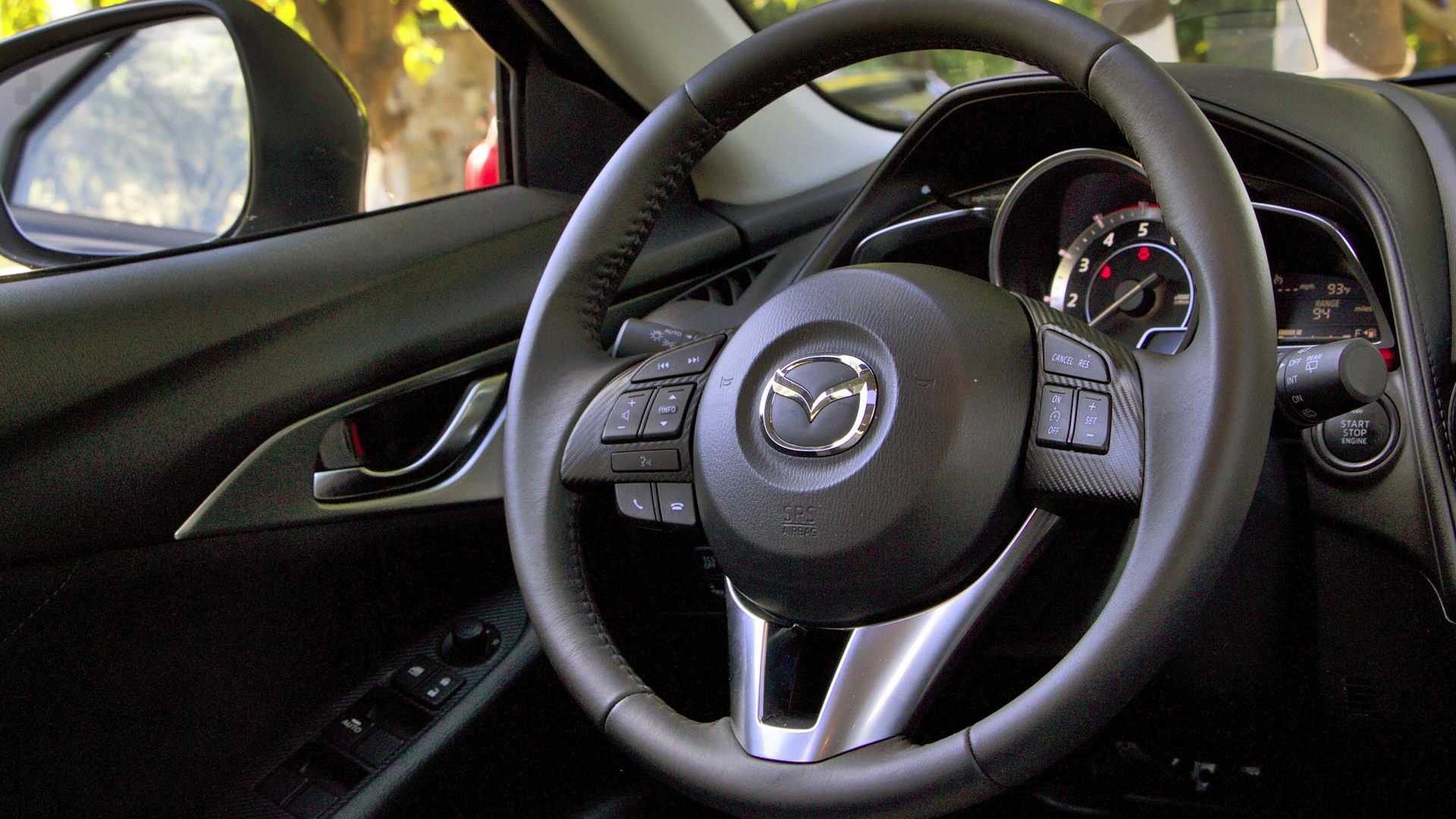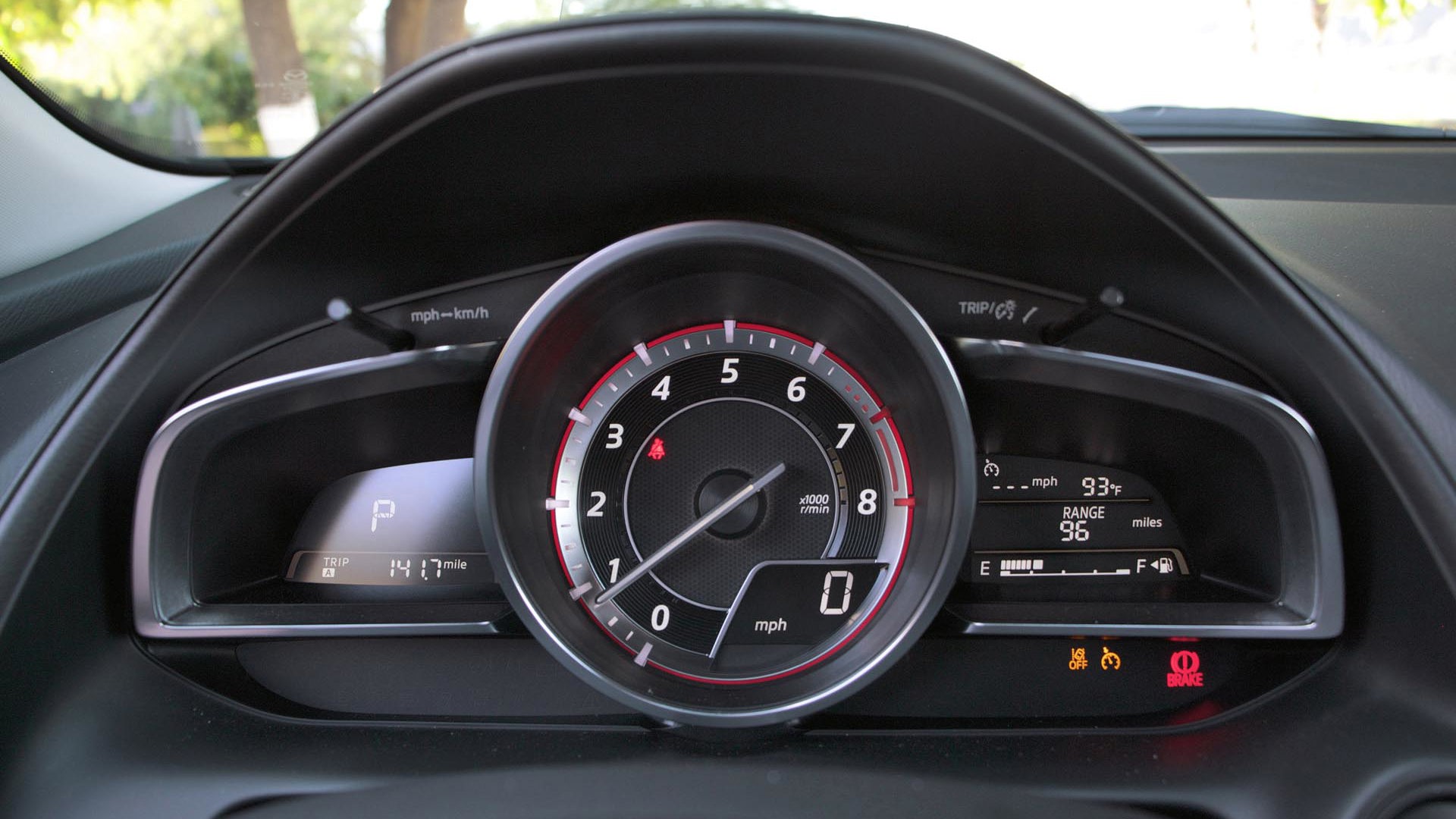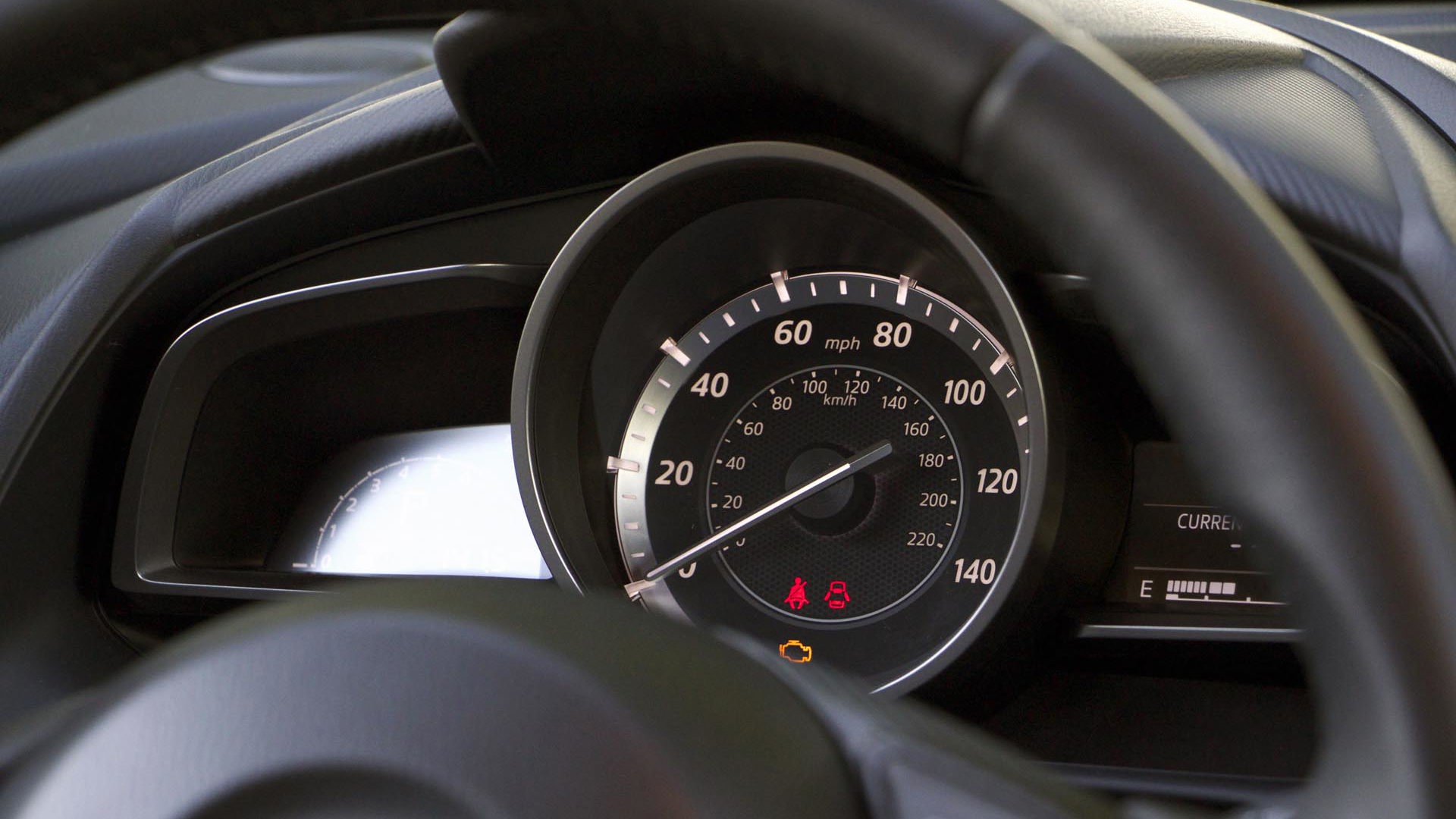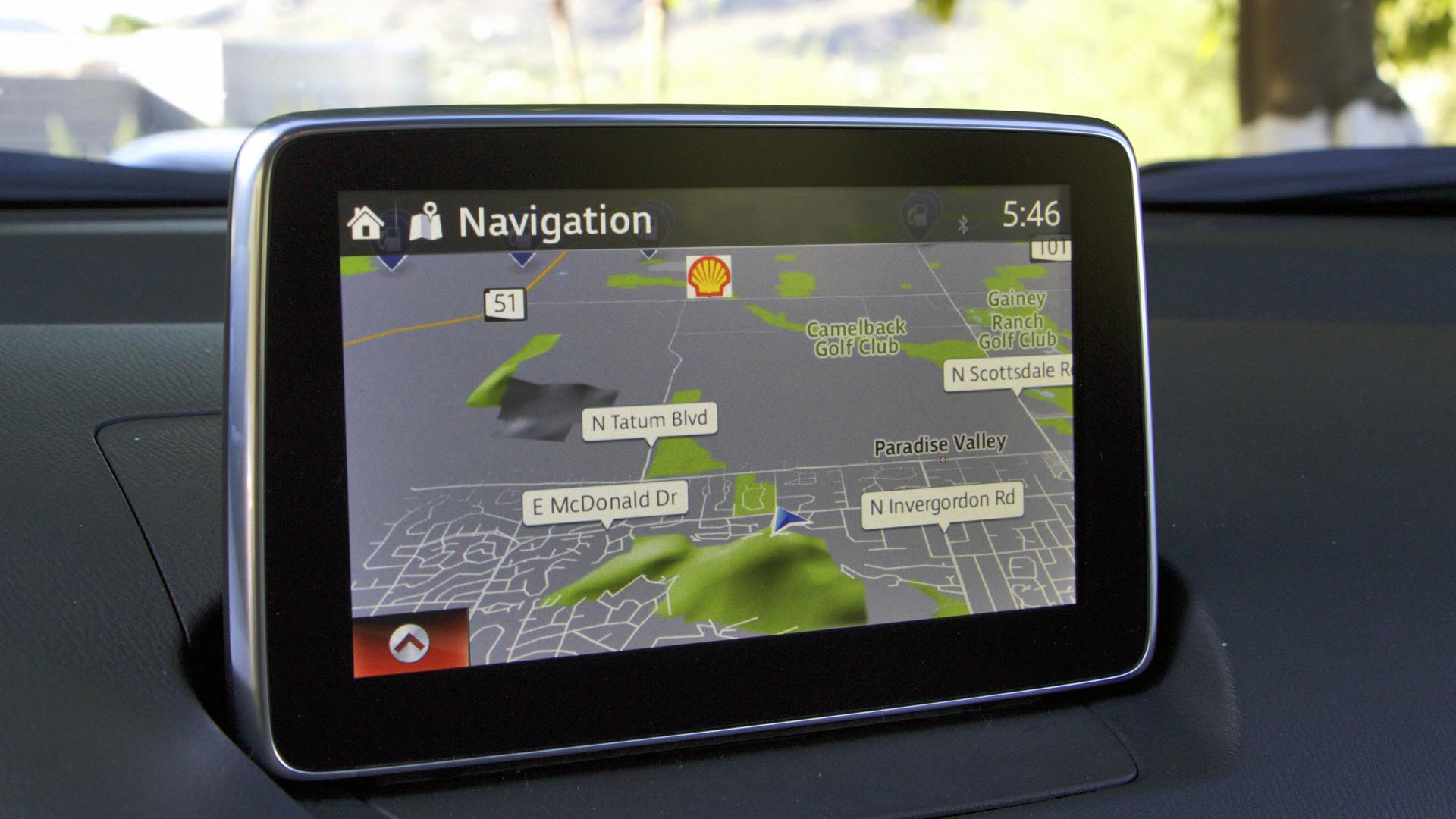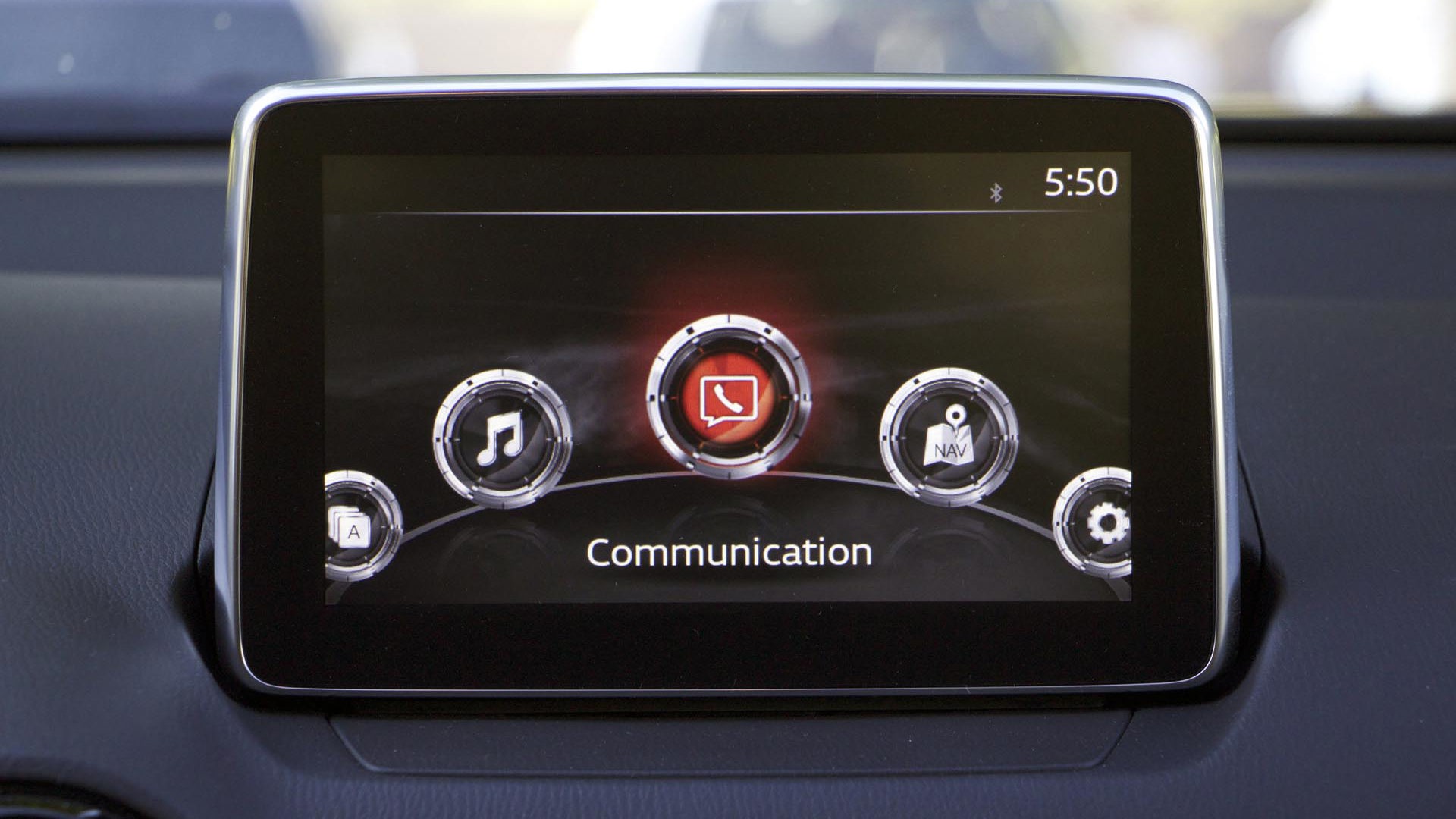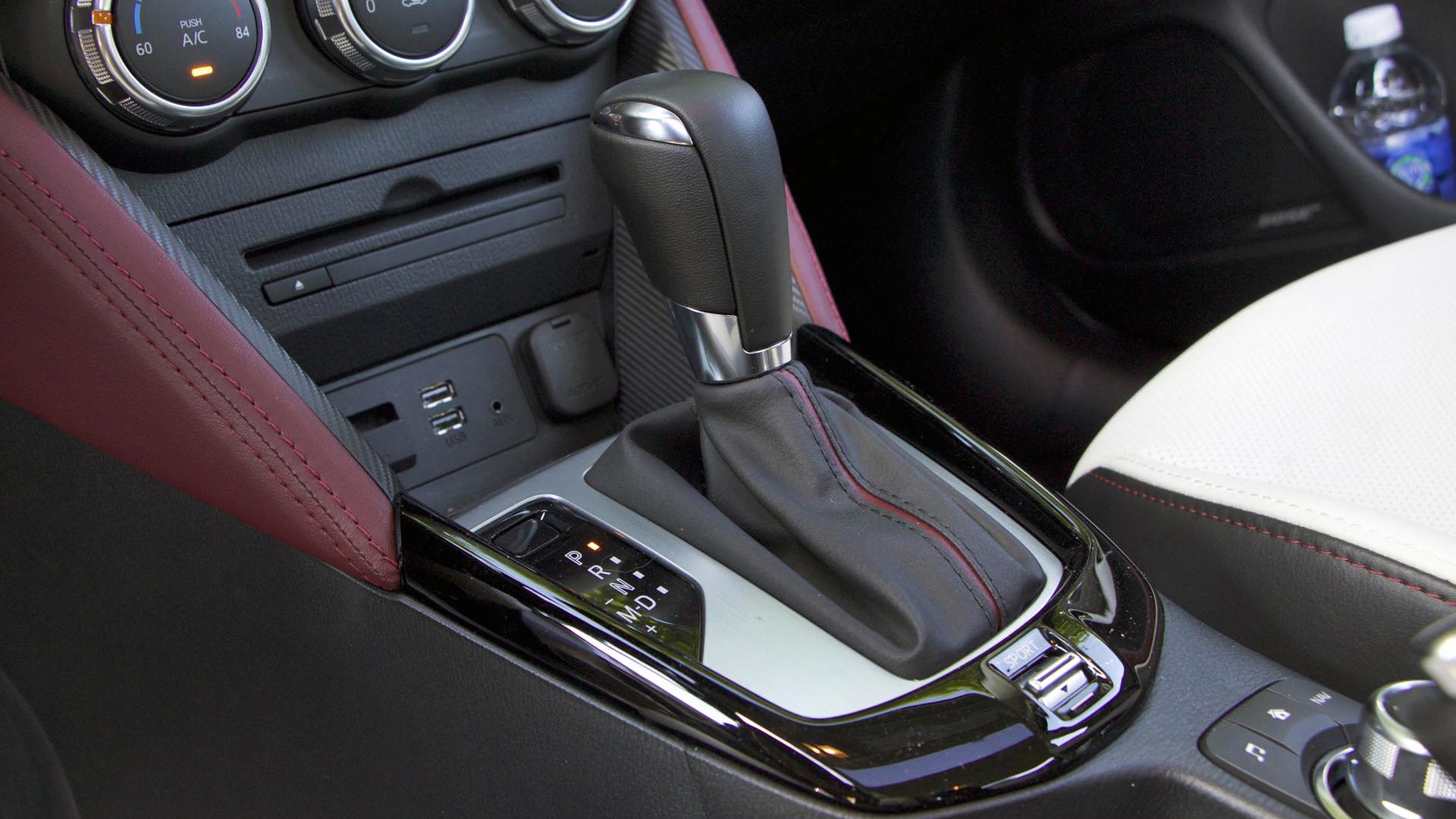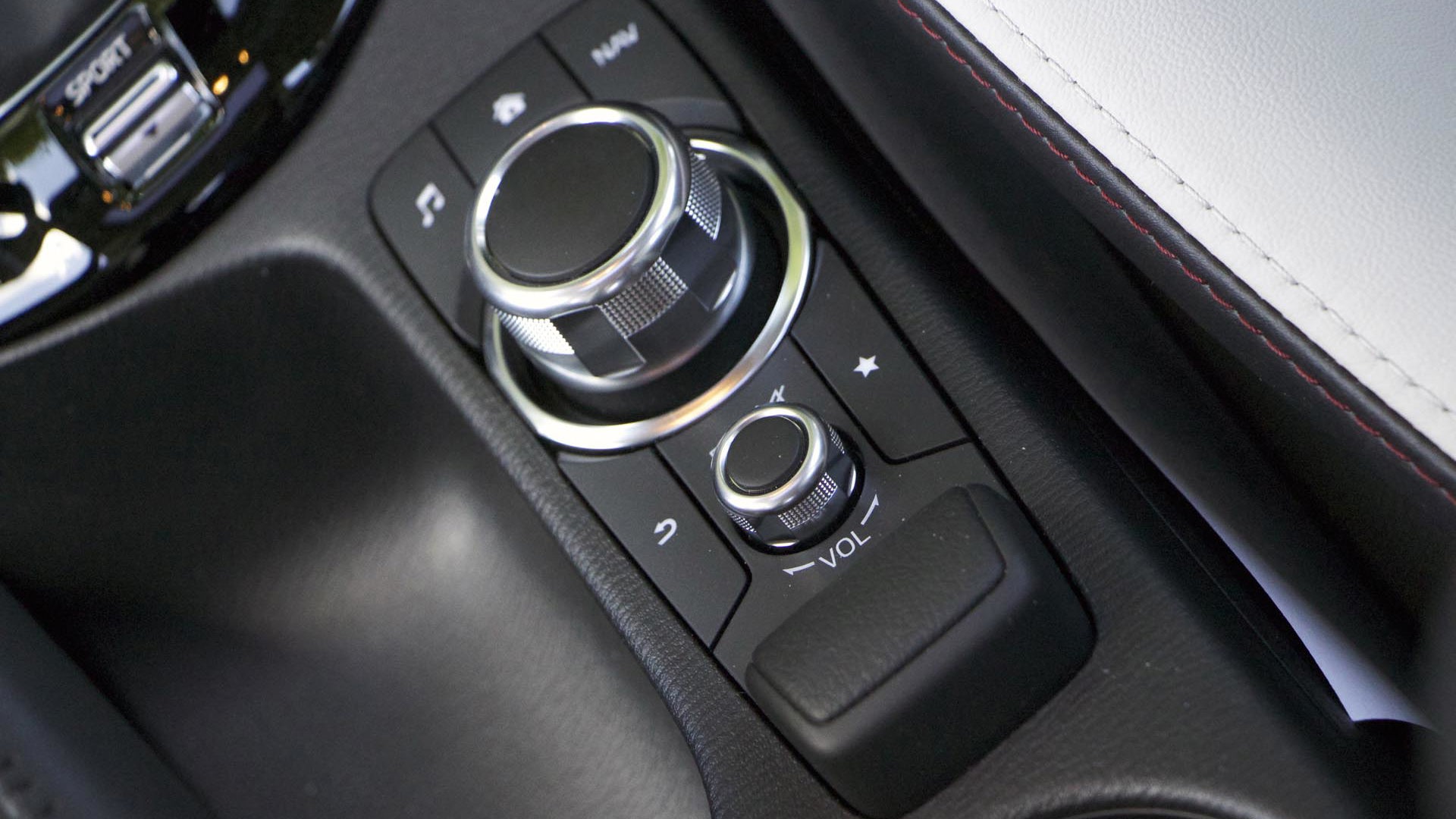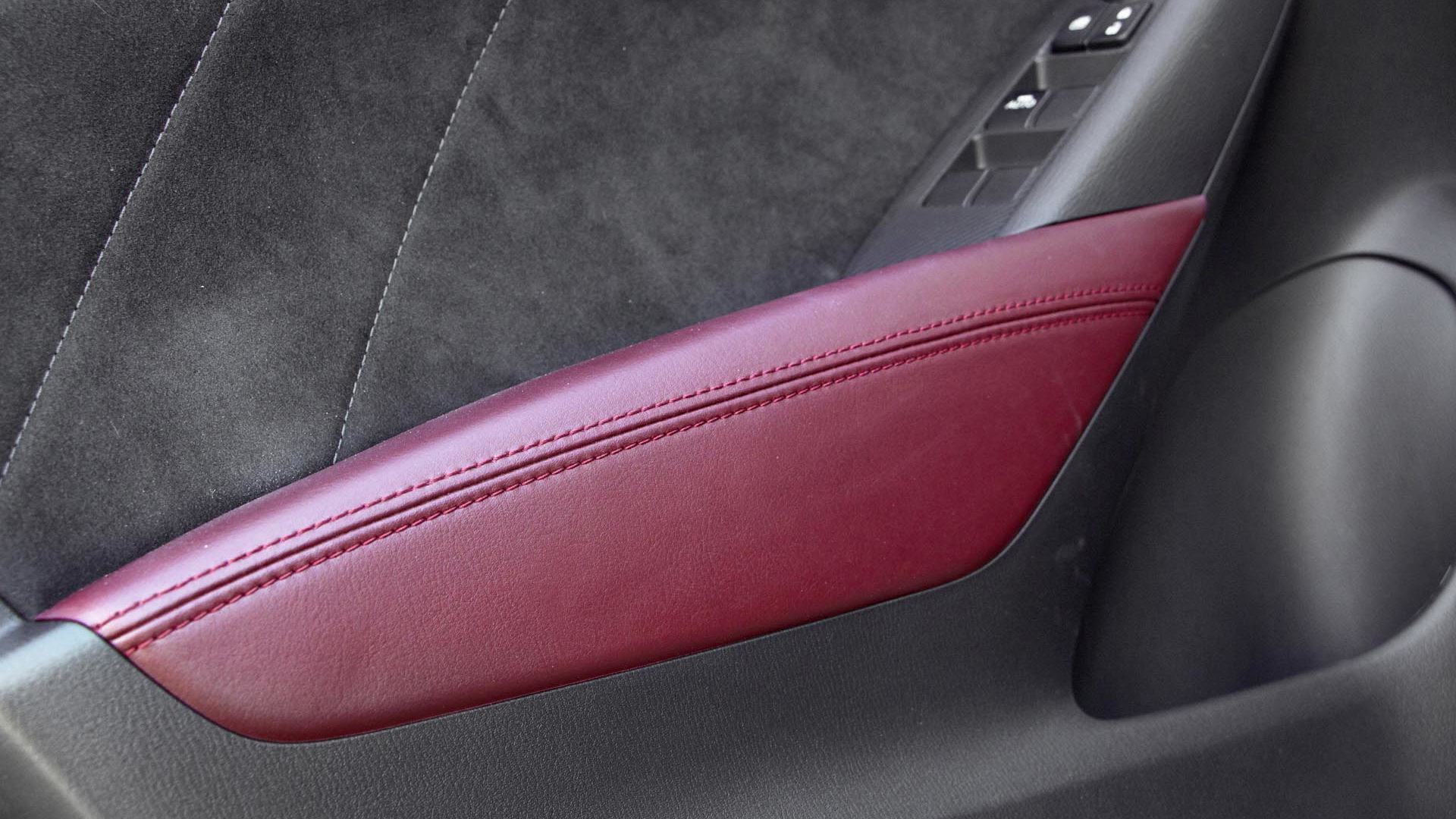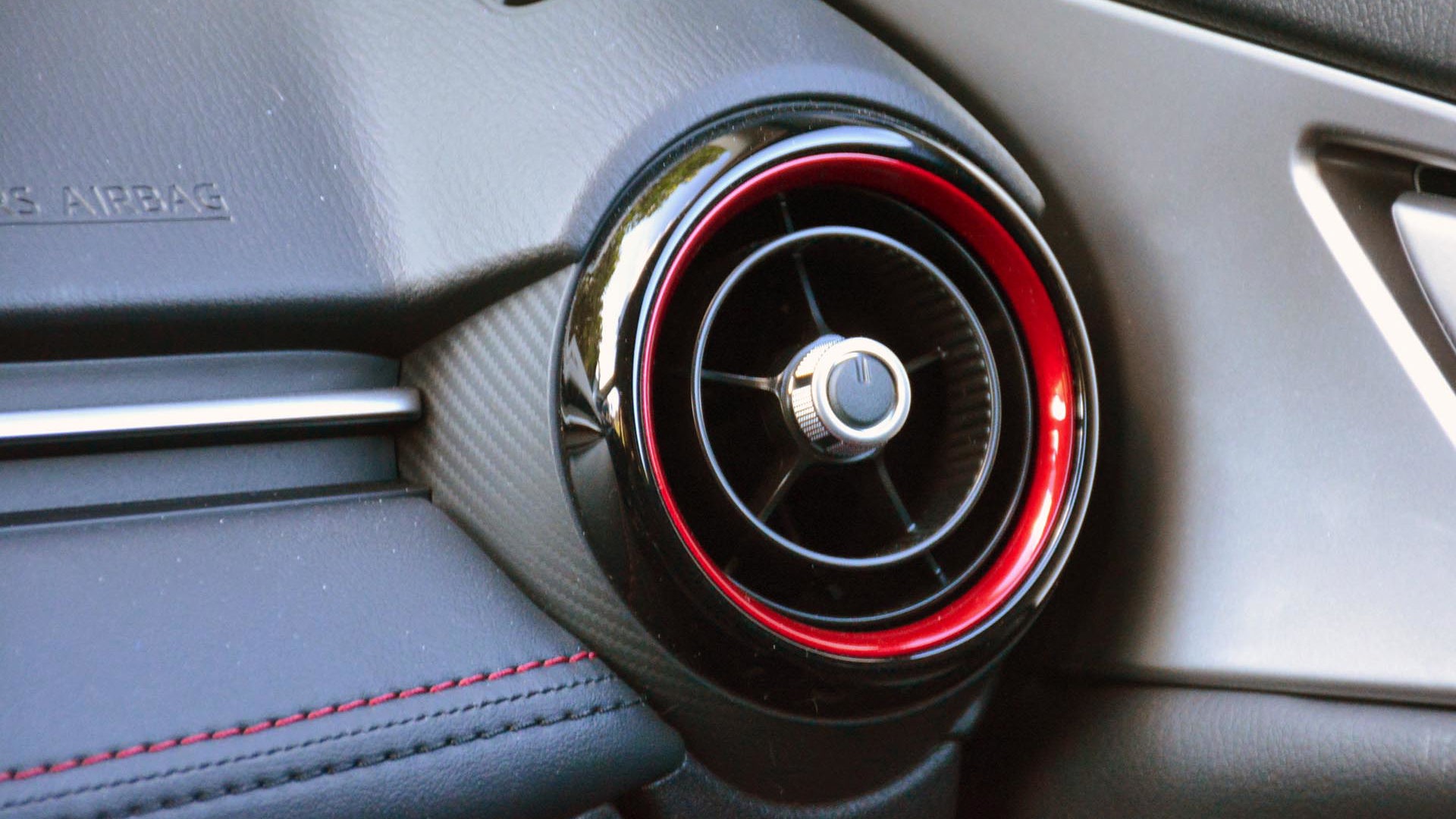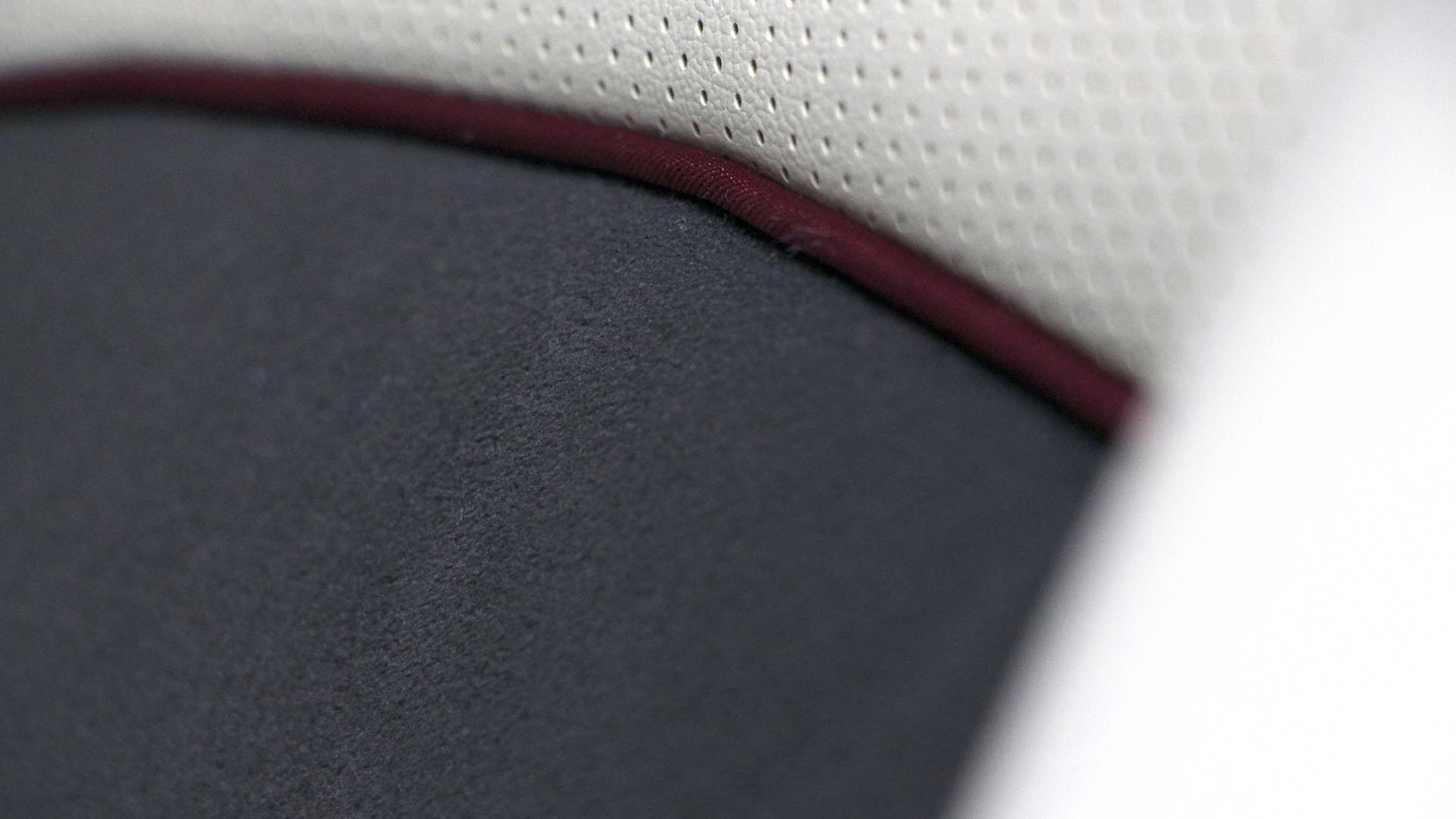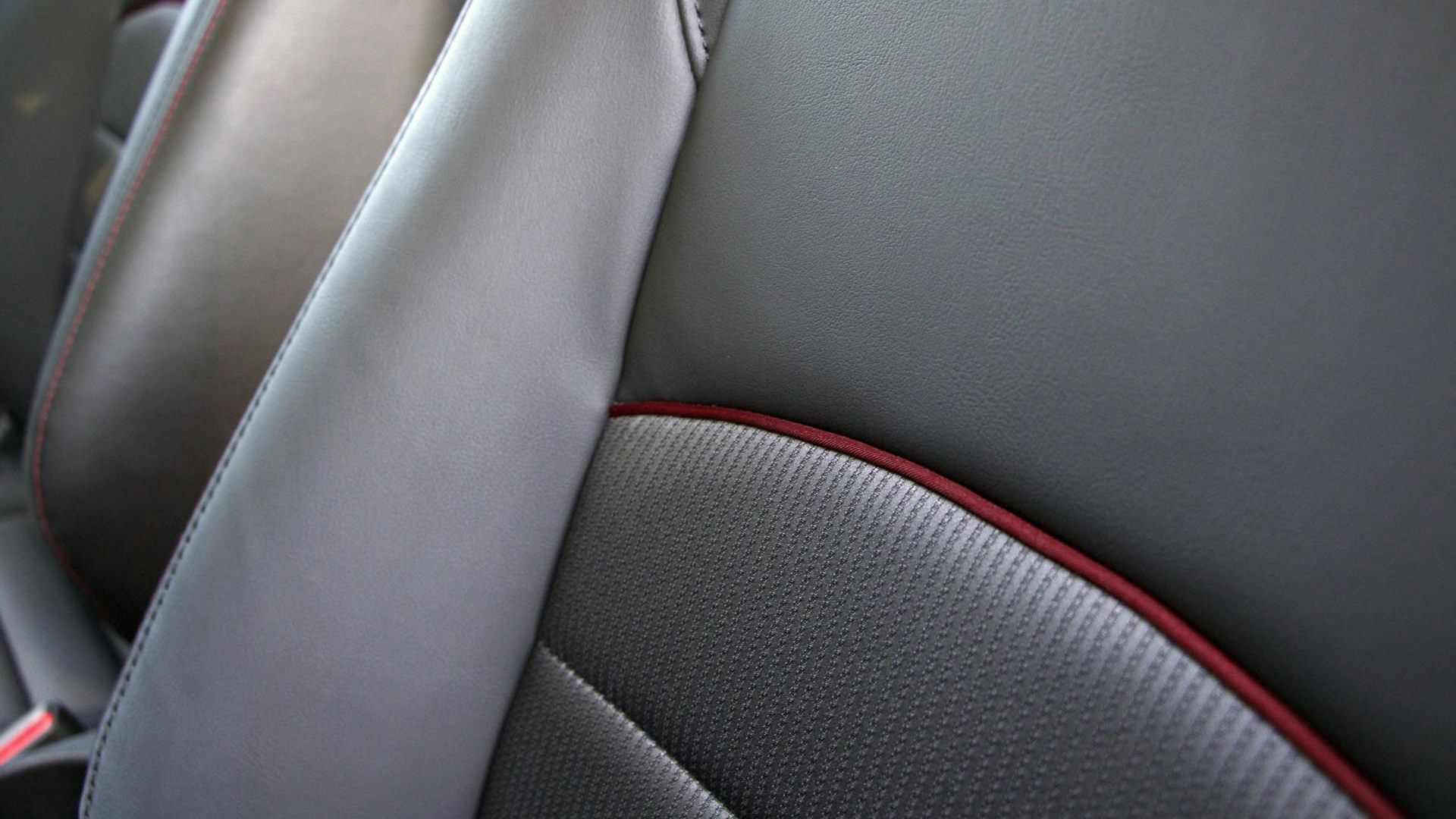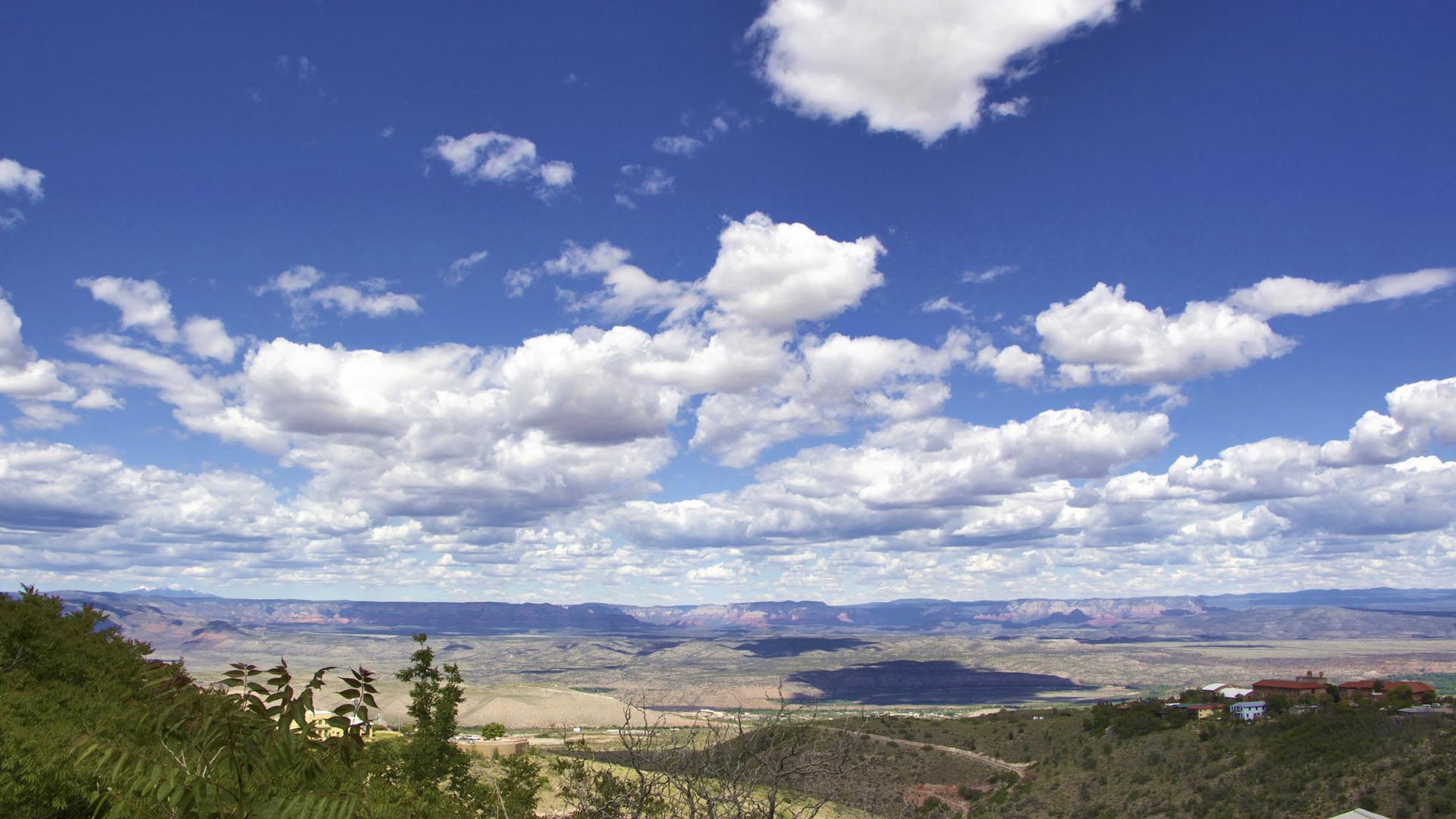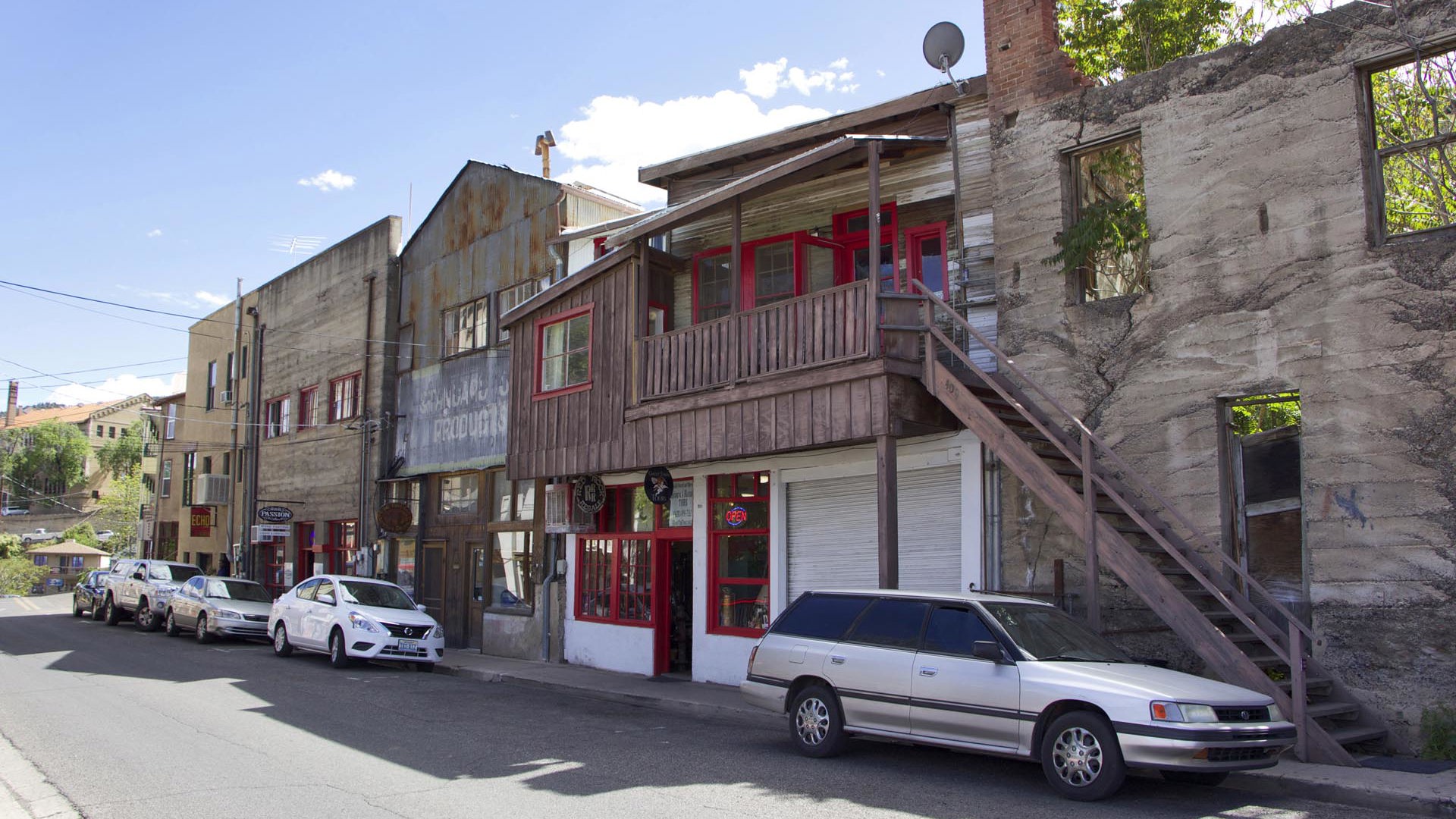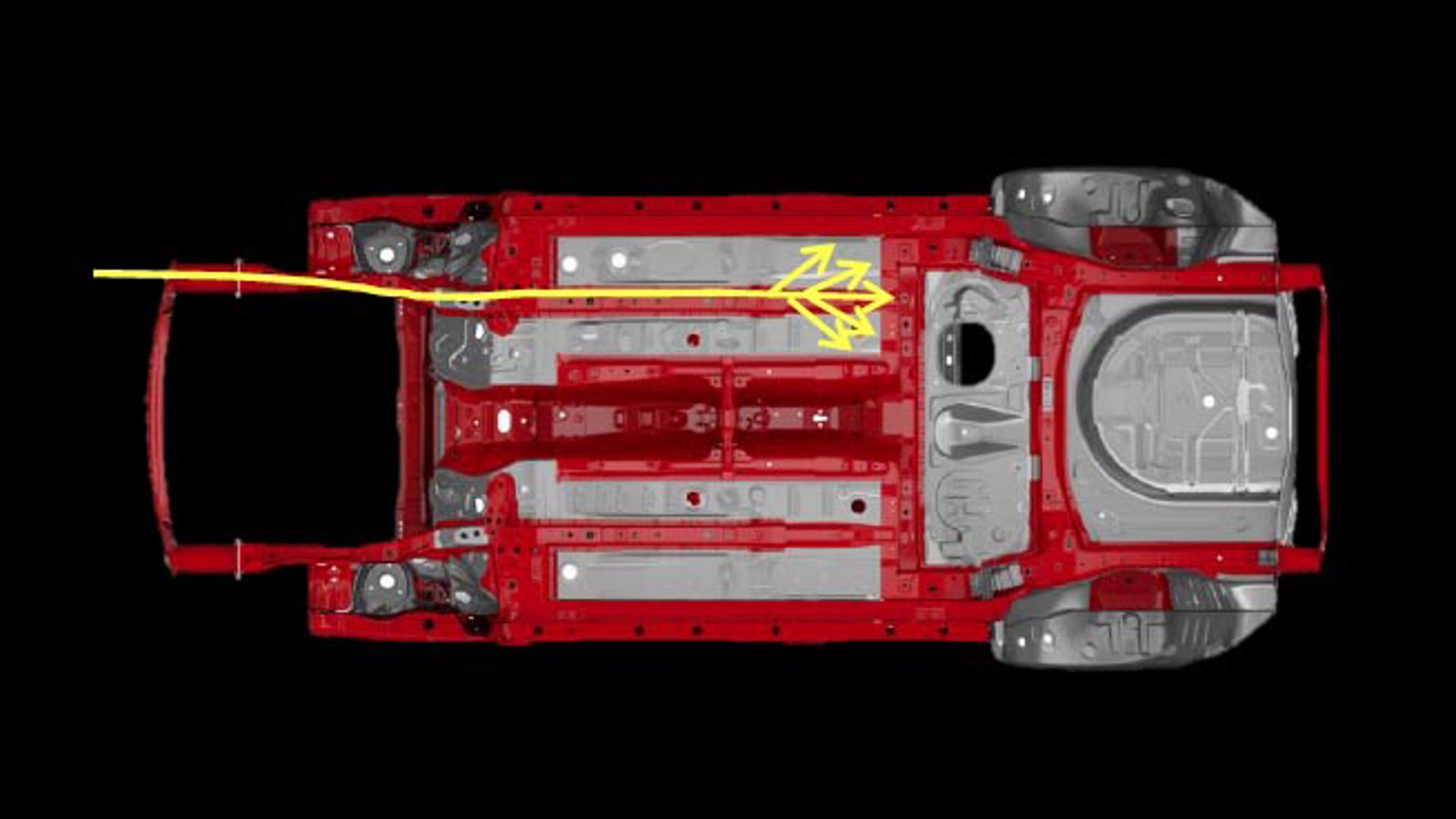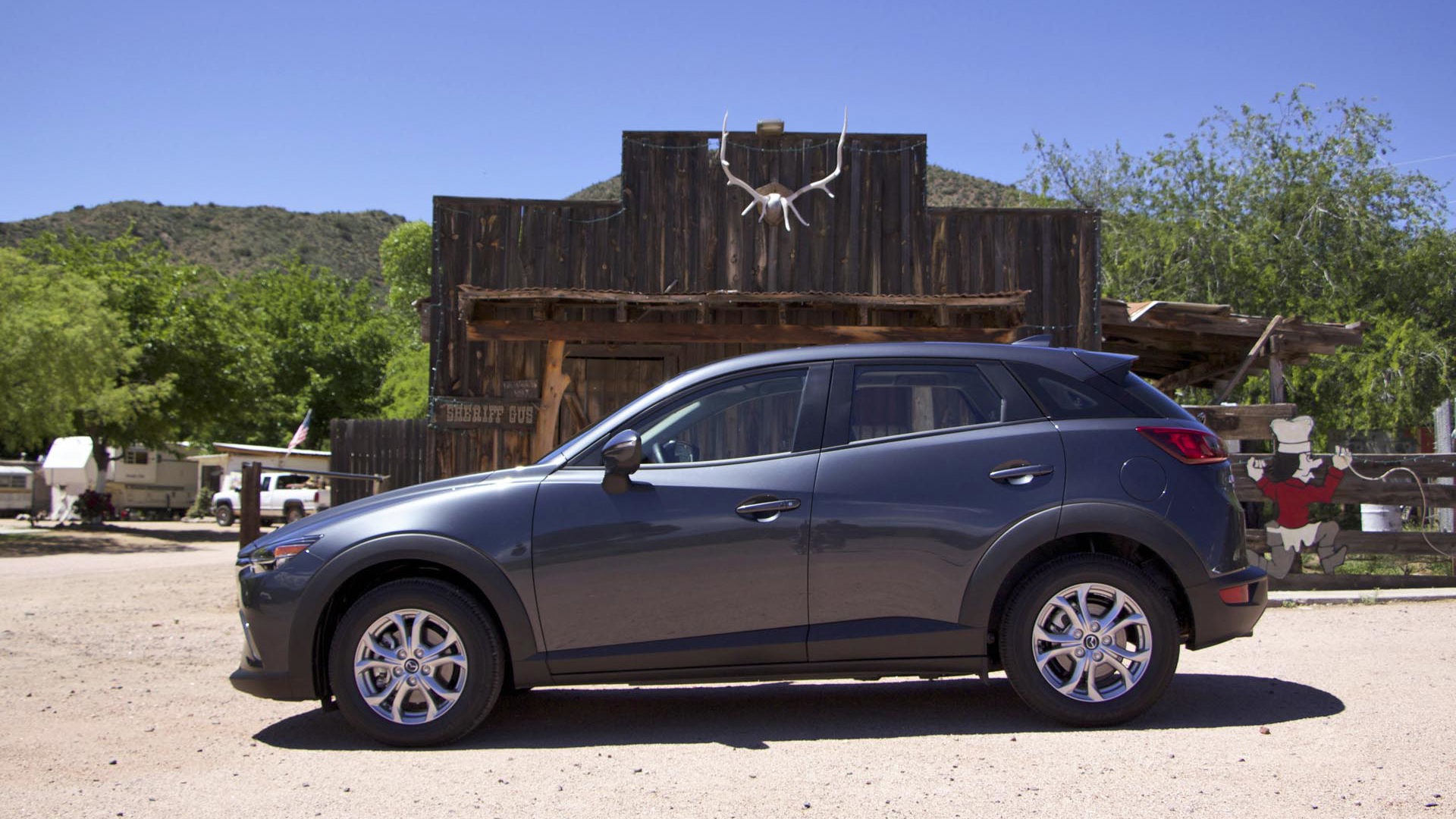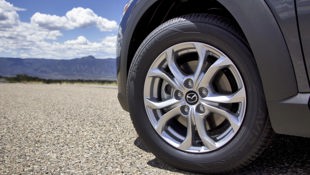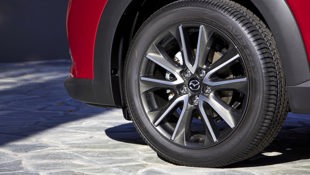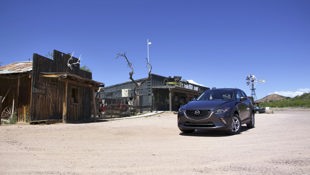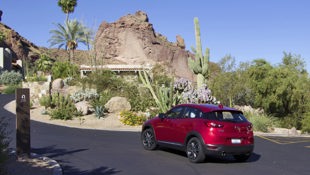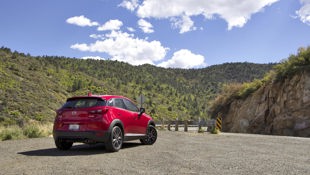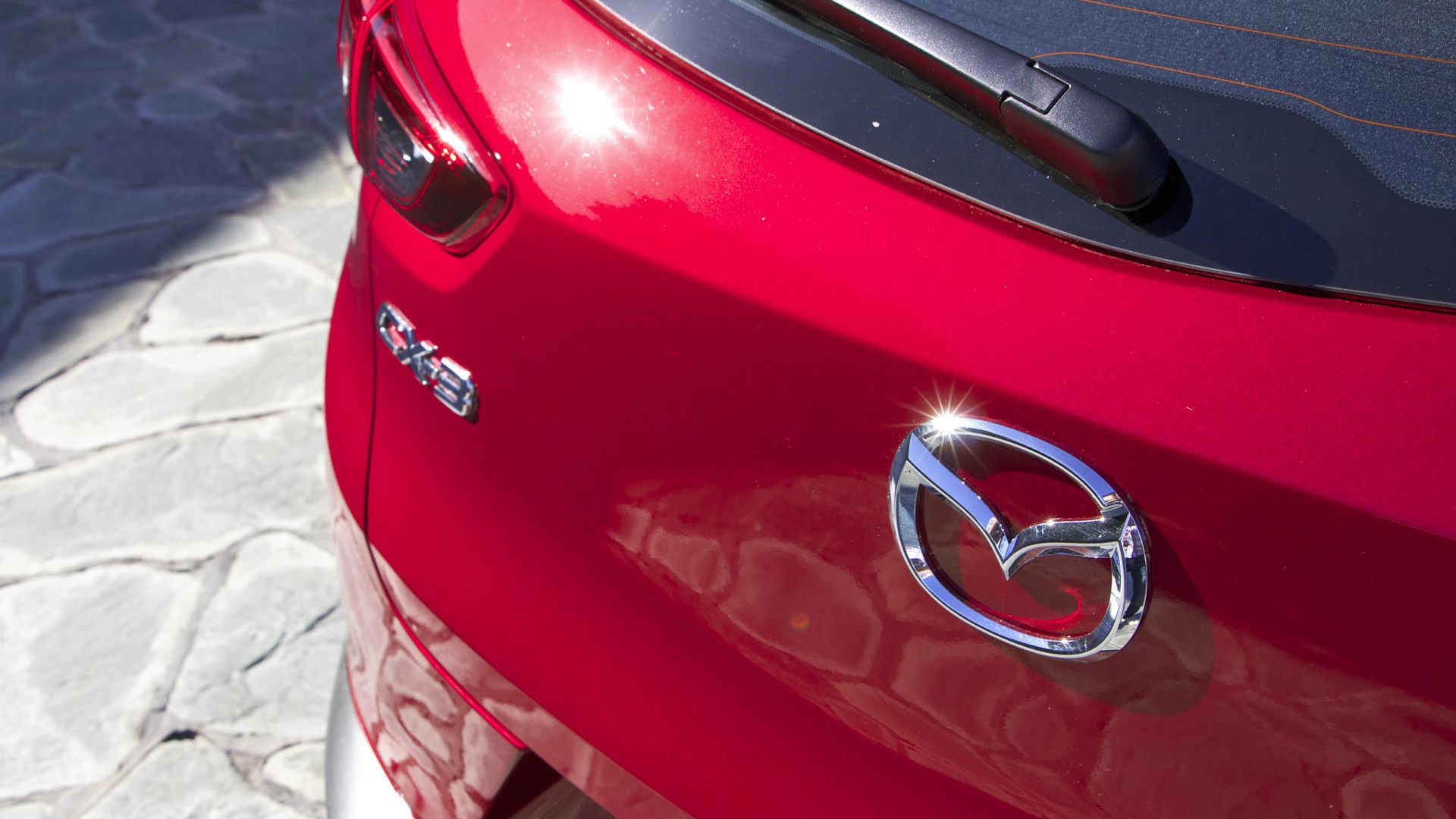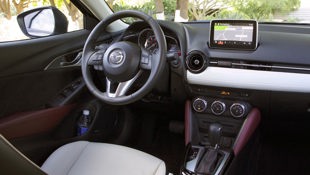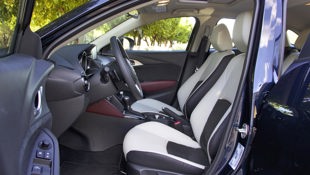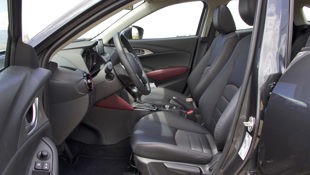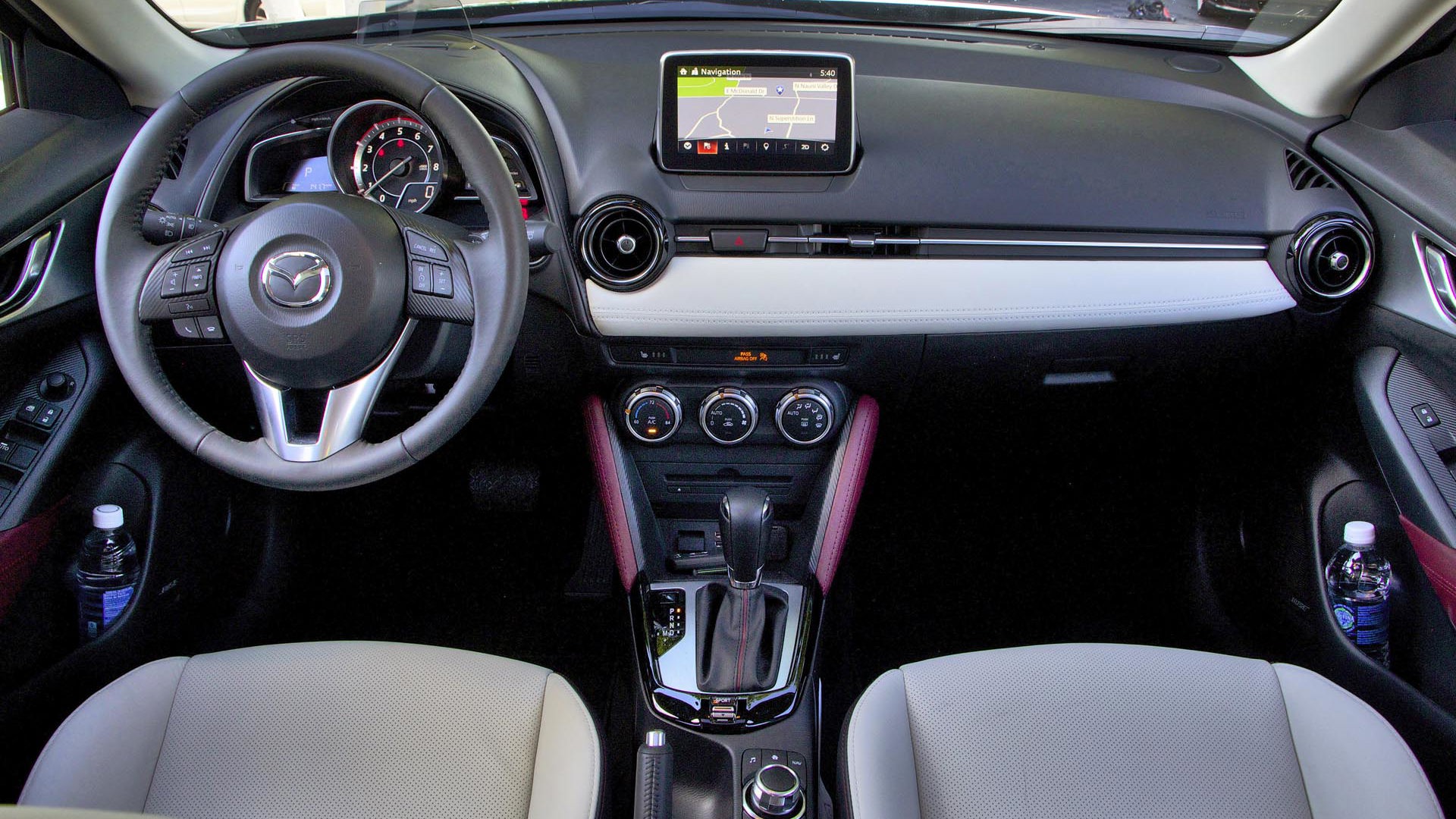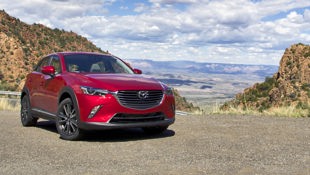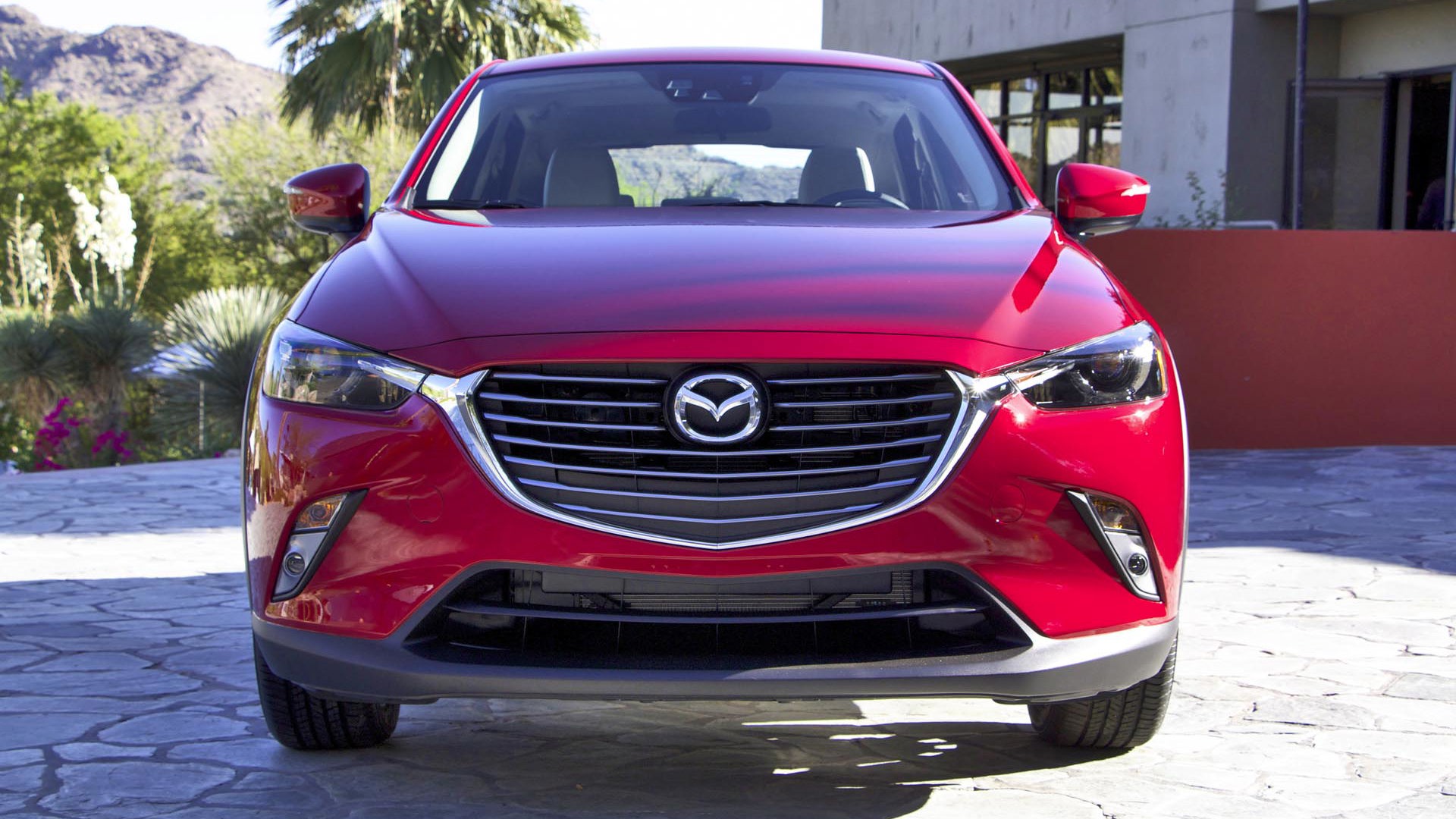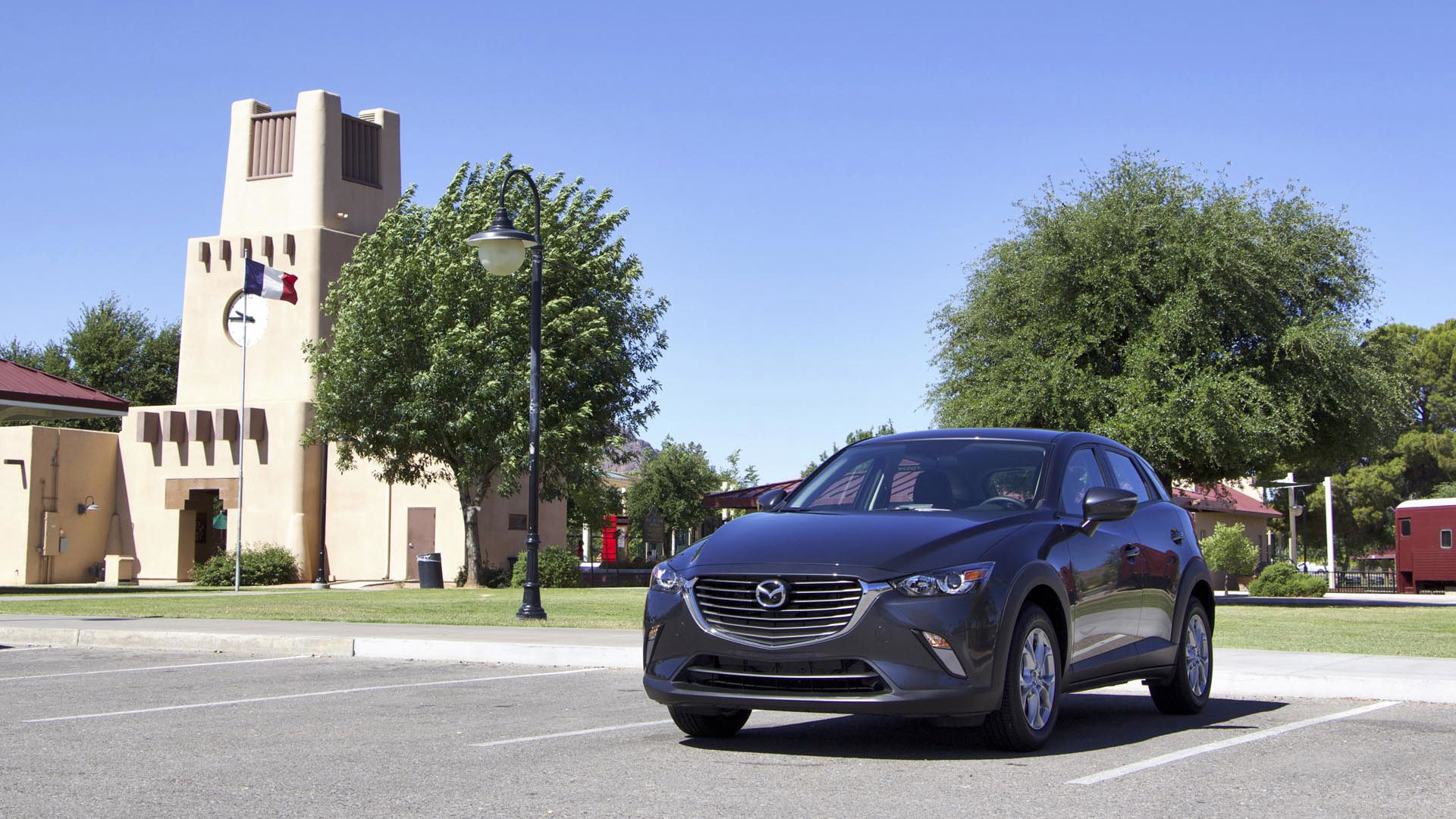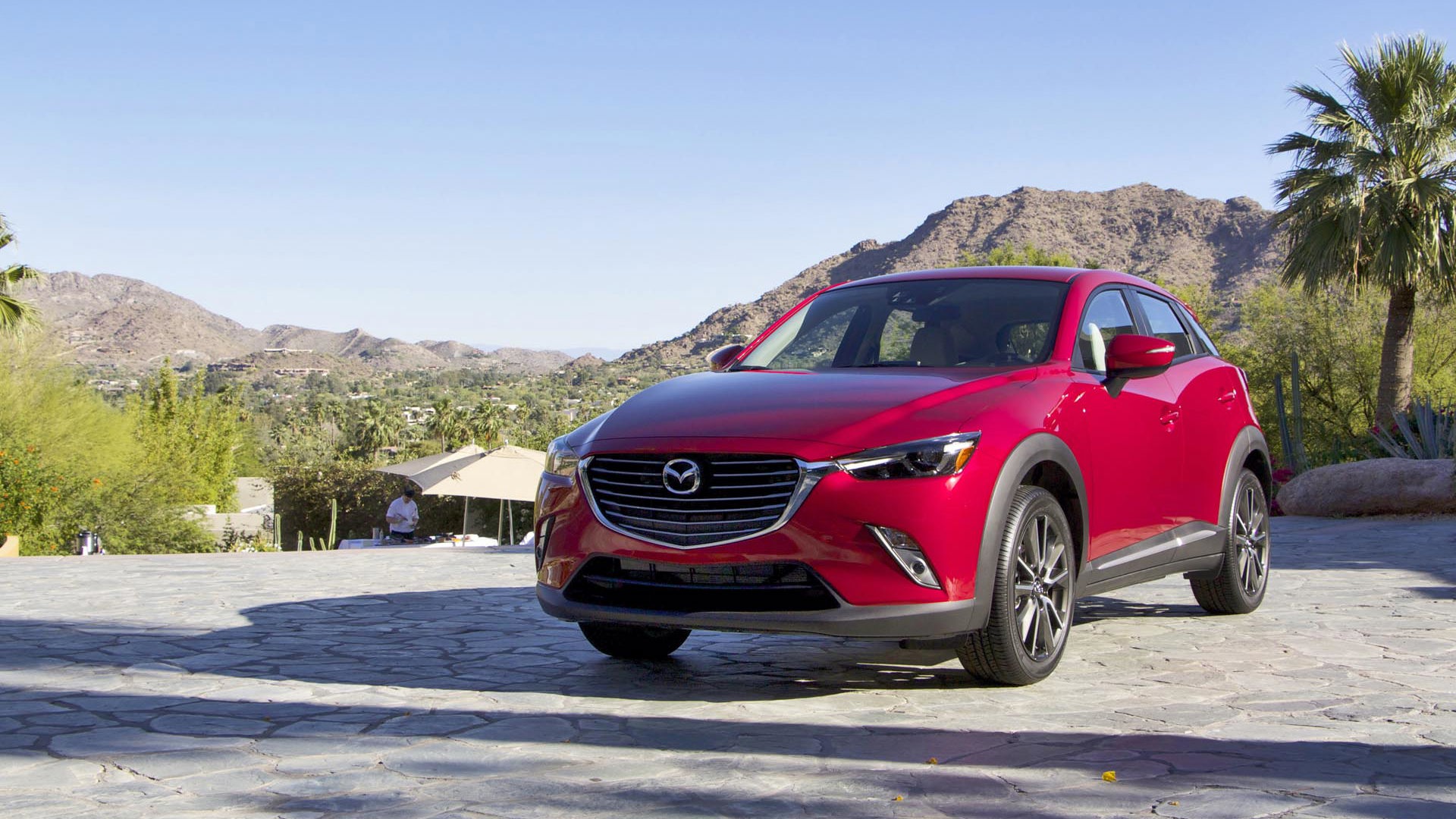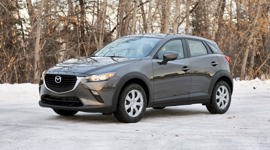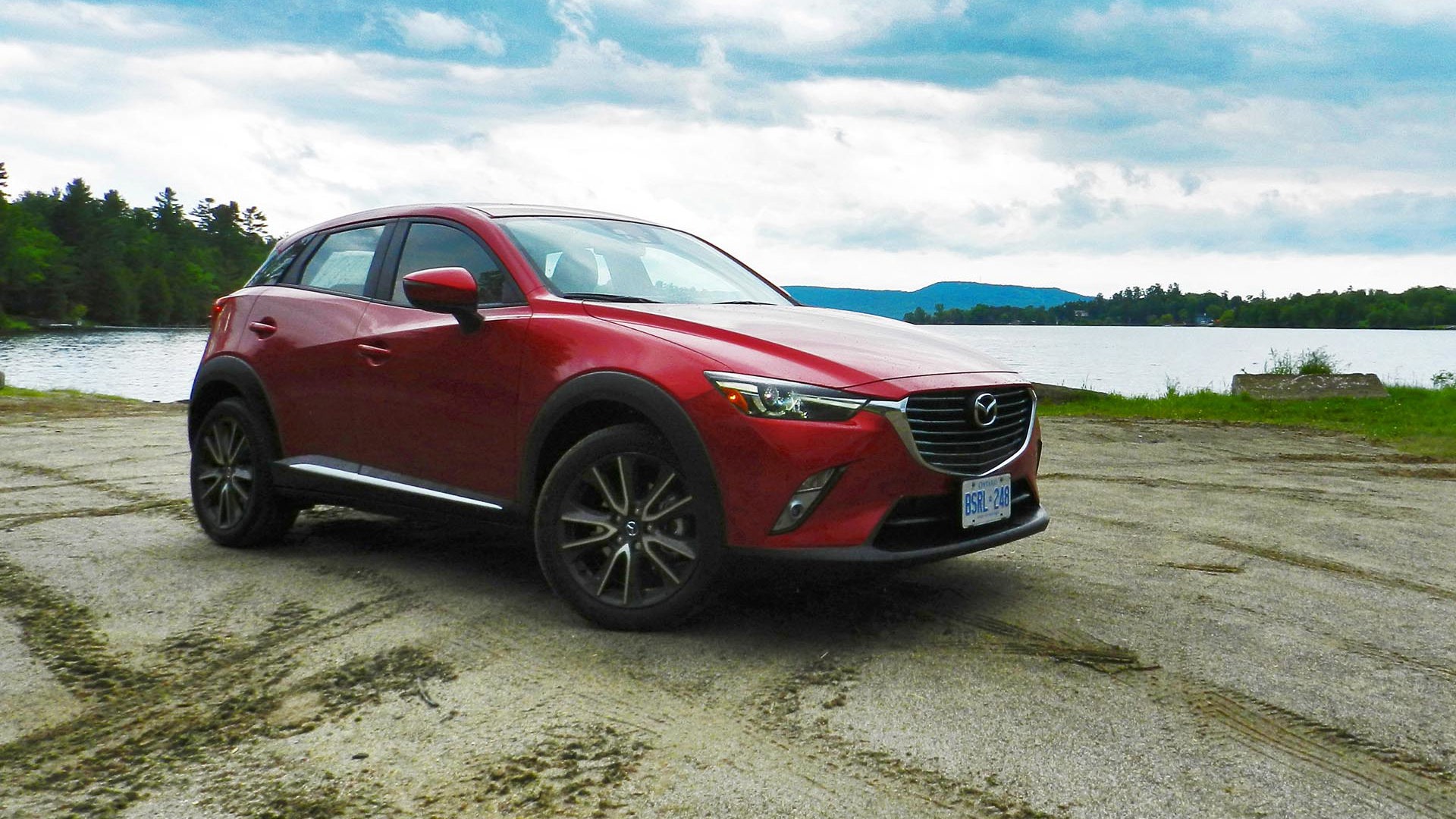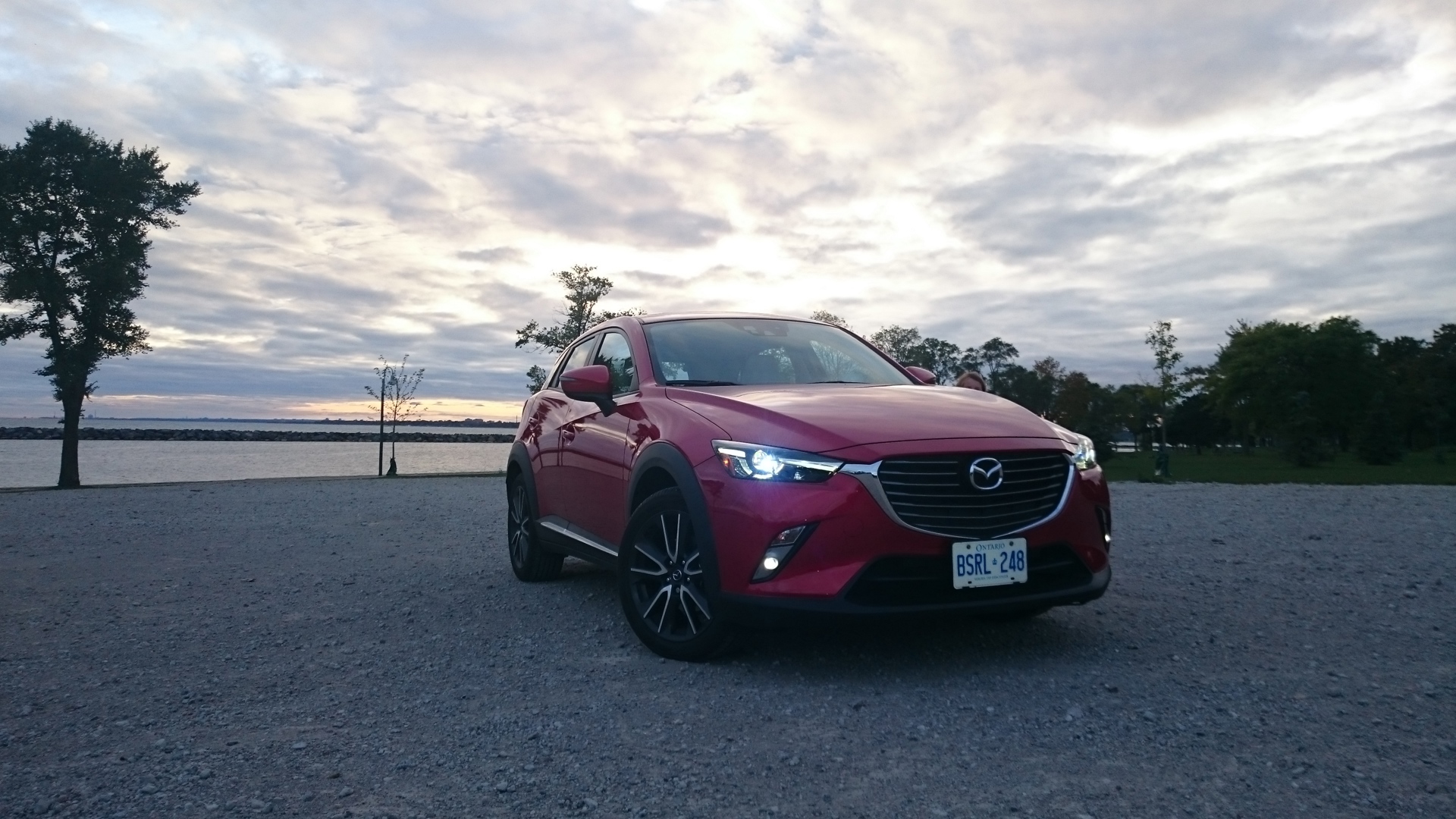Scottsdale, Arizona – It’s not often I desperately want to drive that road again in a crossover, but there I was, looking for a safe pullout where we could head back over the pass between the ghost town of Jerome and points west and south like Prescott and Phoenix. The Mazda CX-3 made me do it. It made me forget I was driving a subcompact crossover. It focused my attention on the weight transfer under heavy braking, the whine of the little 2.0L four-cylinder screaming up to its 6,500 rpm redline, turning the steering wheel, and lo and behold, the car simply diving into a corner a crossover simply has no business attacking. So we turned around. We went back. We drove it again, my driving partner and me each getting an extra dose of Hwy 89A’s twists and turns, sometimes even without dawdling traffic holding us up.
The Mazda CX-3 made me do it.
But you’re not here for that are you. Dammit Mazda, quit confusing us poor helpless enthusiast automotive writers. Don’t you know that all customers care about is cargo capacity, ease of entry and fuel efficiency? And getting a sunroof without leather seats (or vice versa)? And the tan leather interior with the red exterior? Why do you keep delivering little cars that are just so damned fun to drive, distracting us from critical issues like lack of an armrest, or the weird location of the cupholders?
Okay, time to get back to work and examine the CX-3 in context, in relation to its peers rather than for its connection to the roads we live to drive. The CX-3 joins an exploding segment, the Nissan Juke, Mitsubishi RVR, Chevy Trax and Subaru XV Crosstrek having established a foothold in the crossover market, and now the Honda HR-V, Jeep Renegade and Fiat 500X all slotting in beneath the conventional compact crossover segment. Mazda, as in other segments, is aiming to distinguish themselves with a quality interior, sporty driving dynamics (I think we’ve established that it delivers on that front, yes?) and good solid value with a range of technology in a sophisticated package.
A spirited driving experience has long been Mazda’s calling card, and despite the simplicity of the CX-3 on paper, it delivers that quality up and down those roads you go out of your way to tackle. It all starts with the platform, sharing its basic building blocks with the CX-5 and Mazda3, but shorter than either and taller than the Mazda3. By using high-tensile steel in key areas (and 63 percent of the body overall) combined with the shorter wheelbase, Mazda was able to eliminate two heavy cross members and the extensions of the longitudinal beams under the trunk by stamping the floor in the shape of the beam and designing it to dissipate energy in the event of a collision. The result, a lighter, more rigid body with top crashworthiness targets. Curb weight lands at 1,275 kg in FWD and 1,339 kg in AWD trim, lighter than most competitors, including the new Honda HR-V (1,320 FWD CVT/1,389 AWD CVT).
Another byproduct of the thicker sheet metal for body panels like the front floor, tunnel and rear wheel wells is sound insulation, complemented by more sound-absorbing materials in the interior trim that make this a reasonably quiet ride compared to some other Mazda products that struggle in that area.
While you might think the light weight would mean Mazda could blow the budget on double-wishbone suspension, front suspension is the fairly standard MacPherson strut with coil spring and antiroll bar, while the rear suspension is a simple torsion beam. However, the front struts are set up with a caster angle that is more sports car than cute ute and combined with that very rigid chassis and direct steering, the CX-3 dives into corners with glee and yet returns a relatively smooth ride over rough pavement for such a small, short-wheelbase vehicle.
The brakes support an engaging driving experience with a firm feel and reassuring response throughout our run up and down 89A from Jerome to Prescott.
Top GT models get 18-inch gunmetal alloys with 215/50 R18 tires that offer additional cornering stability and beef up the look of this fun little crossover. Base models ride on 16-inch steel wheels, and mid-level GS models are outfitted with 16-inch alloys, though even on the 16s, the CX-3 rides and handles with enthusiasm.
Out on those switchbacks, when not stuck in convoy with gawking tourists, the CX-3 can build up a run thanks to good feel from its steering, with the transmission locked in Sport mode keeping the engine frantically pulsing an endearing little scream. No matter how sporty Sport mode is, there is only so much power, and you have to give it all she's got pick up the pace for highway merges or to build up speed once at cruising speed. In top GT trim paddle shifters make an appearance, allowing you to control the quick gear changes when driving enthusiastically.
Power comes from Mazda’s familiar Skyactiv 2.0L four-cylinder gas engine is, but it has been massaged for packaging, with redesigned 4-2-1 exhaust so it can fit in the more compact engine bay. While there is some sacrifice in power, thie version of the 2.0 Skyactiv-G makes 146 hp at 6,000 rpm and 146 lb-ft at 2,800 rpm, it maintains early power delivery, actually improving low-end torque that helps get the car moving. While down on power and torque from other applications, don’t forget how little the CX-3 weighs, so it is not much of a concern of its intended purpose.
The only transmission available with the CX-3 will be the Skyactiv six-speed automatic, also redesigned for more compact packaging, saving weight and space in the process. In operation it is as sharp and smooth as we've experienced previously, with a Sport mode that dials up the driving intensity by holding gears longer and downshifting eagerly to maximize acceleration. Will a manual transmission make an appearance down the line? Mazda Canada is trying, but will likely be a symbolic move rather than driven by market demand. It would certainly would increase the fun factor exponentially.
You don’t likely land in this segment looking for great driving thrills, but if you like a little pizzazz with your little urban runabout, you won’t mind having a little fun in the CX-3 on a sideroad on the way up to a cottage. Forward visibility is quite good, and although the swoopy styling obstructs rear vision, a standard rear-view camera makes parking or backing up a cinch.
The biggest feather in Mazda's cap in recent years is the real-world efficiency of their Skyactiv technology, which is a catchall for simple yet clever weight-saving, efficiency and performance solutions for conventional powertrains. As with most new Mazdas, the Skyactiv makeover has resulted in stellar fuel consumption, both in official estimates and in our experience it bears out in the real world as well. The CX-3 goes right to the top of the class, FWD models rated at 8.2 L/100 km for city driving and 6.7 L/100 km for highway duties and AWD expected to return 8.8/7.3 city/highway, both essentially tied with CX-3’s upcoming archrival, Honda’s new HR-V at 8.3/6.7 for the FWD CVT, and 8.8/7.2 for the AWD CVT.
Mazda have made some impressive changes to the AWD system. On the mechanical side, they aimed for less weight and smaller packaging, coming out 20 percent lighter than in the larger CX-5 and fitting in the smaller CX-3. On the software side, Mazda has incorporated information from a slew of new and existing sensors for temperature, moisture, wipers, brake pressure, steering wheel angle, power steering feedback and more. A new algorithm processes 200 data points per second in order to determine torque distribution, even doing so preemptively if it detects a slippery surface in a static position. Standard torque split sends 98 percent of power to the front, and up to 50 percent of the torque can be shifted to the rear, though there is no AWD locking function.
Of course, it’s a small machine, so you won’t likely fit six coolers and a canoe in the back, but with over 400 L of cargo space, it’s enough for a couple on a camping trip or a couple large suitcases for airport drop-offs. With 60/40 split-folding rear seats, you can squeeze a lot more baggage in there with just three on board, and fully 1,528 L with both seats dropped (though that goes to 1,484 in GT models). Cargo area measurements are 1,000 mm wide, 785 mm depth to the seats (1,440 mm to front seats) and a height of 534 mm to the cargo cover, with a low liftover height for easy loading.
As we mentioned, the CX-3 is a small vehicle, 4,274 mm long with a 2,570 mm wheelbase, though in this segment that is longer than anything except the XV Crosstrek. At 1,767 mm wide it’s in the middle of the segment, and at 1,542 mm tall it’s one of the lower cars, with only 154 mm of ground clearance, so it is much closer to the ‘car’ end of the crossover spectrum than a high-riding ute like the XV that has far more SUV in it. The CX-3 trails class leaders for headroom and legroom, but is still reasonable for four people.
No matter the numbers, the front seat has plenty of space and exemplary headroom – in some cars even the lowest seat height adjustment has my hair brushing the headliner, but even at the CX-3’s highest seat adjustment I had over an inch of clearance (me at 5’11”, with an extra inch or so of hair). Rear seats are as tight as expected, but the shape of the four primary seats is accommodating for many body types and sizes, with suede-like inserts in higher trims that compensate for minimal bolstering and keep you well stuck in your seat when driving spiritedly. Entry and exit is as easy as sliding in as it’s lower than a larger SUV or crossover, but still comfortably higher than an average car.
Fabric seats are standard in lower trims, leatherette optional on the middle GS trim, while GT models come equipped with standard leather. The leather is surprisingly high quality, with tight, genuine stitching and handsome eye-catching burgundy leather on the steering wheel, shifter, armrests and across the dash for GS trim and above. The remainder of the materials are also high quality, with hard yet pleasant plastic dashtop and overall finish that looks and feels solid and substantial, with a bit of flare like red accent rings in the vents.
Since we’re talking trim differences, let’s briefly cover what you get for your money with the CX-3 lineup. CX-3 pricing starts at a very approachable $20,695, and that is with two of the essentials most customers are looking for: automatic transmission and air conditioning, for which you have to pony up $21,990 to get the CVT in Honda’s HR-V. AWD is a $2,000 option on the CX-3’s base GX trim ($22,695) and mid-trim GS, and standard on the GT, but Honda’s cheapest HR-V with AWD rings in at $24,290.
Notable features in base GS models include push-button start, back-up camera, body-colour mirrors and door handles, cargo cover, trip computer, Bluetooth and seven-inch infotainment display with HMI knob controller, which you can upgrade to include navigation for $425 with a simple SD card.
The mid-level GS trim doesn’t add a lot in the way of feature content per se, but it does finish the cabin nicely. Among the interior upgrades with the GS trim are premium cloth seating surfaces, those burgundy leather door panels, leather-trimmed steering wheel, shift knob, parking brake and dash panel with accent stitching, piano black trim as well as auto headlights, rain-sensing wipers and heated front seats and mirrors as well as access to the full range of vibrant colour options (which can add another $200-300 to the bottom line). The GS starts at $22,695 and offers a Luxury Package with leatherette and moonroof for $1,500 and AWD is again $2,000.
Mazda has taken a very aggressive approach to their entry level pricing and content, but also offers advanced technologies in their fully loaded model. The GT will run you $28,995, but AWD is standard at that price and a stunning two-tone leather interior treatment is a special order, but at no extra charge. Highlights for the GT spec are adaptive LED headlights and other LED lighting, navigation, keyless proximity entry, head-up display, and the $1,500 Technology Package adds Blind Spot Monitoring, Rear Cross Traffic Alert, and Lane Departure Warning and satellite radio.
All models are saddled with $1,895 in freight and PDI fees.
The infotainment system is both touchscreen and accessible via HMI knob, which spins to scroll down lists, and can be pressed to enter a selection, with further options accessed by pushing it to the cardinal points. Around it are fixed buttons to shortcut to audio, navigation, home screen, and a dial for volume, as well as a back button and customizable favourites button. Base cars come with straightforward manual HVAC controls, and top-spec GTs get auto climate control.
The base audio has six speakers, and the GT adds a Bose system with an extra speaker, though it takes the fully loaded GT with Technology package to add satellite radio. However, as even base cars have Bluetooth and twin USB ports, you will have easy access to your personal music collection if you keep it on a phone or portable music player. Audio performance was sufficient during our time in it, though nothing out of the ordinary.
While opinions may vary I’ll weigh in briefly on styling before signing off. Mazda's signature Kodo design language combines excellent forms with sharp creases for a modern, sporty yet tasteful look for such a small vehicle. This segment features some dorky little trucklets, and then there is the Juke, so in this company, the CX-3 is the belle of the ball, the proportions mostly pleasing (the hood looks strangely long and awkward from certain angles), a low, wide stance with the wheels close to the corners and touches of metallic trim finishing everything off with a bit of class.
The crossover market continues to grow at an unprecedented pace, with more and more people jumping into small utility vehicles than ever before. Customers looking for easy access, all-season usability, practicality and a broad selection to choose from are finding that the crossover market is full of great options high on value.
While the CX-3 might poach some customers considering the Mazda3 Sport hatchback, the CX-3 should also draw shoppers to the brand looking for a small crossover and Mazda's sporty image.
Is it a Miata on stilts? Not for me, it’s not. While it is fun to drive, it is a car that allows incidental excitement, whereas the MX-5 begs that quest for adventure, be it a track day, an on-ramp revelation, or the perfect excuse to tackle that Bucket List Drive. Then again, this is a car into which I could squeeze my family of four, ready to take on the grandest adventures together. In this class of practicality and easy to live with squeezed into the smallest possible footprint, the Mazda CX-3 flies out of the gate with interior quality that makes it an instant leader, fuel efficiency with the best in the segment, unparalleled driving dynamics for a short little crossover and all the basic utility people look for in a small crossover.
The Mazda CX-3 will arrive in dealerships in late May to early June.
Pricing: 2016 Mazda CX-3
GX FWD: $20,695
GX AWD: $22,695
GS FWD: $22,695
GS AWD: $24,695
GT AWD: $28,995
Options:
(GS) Luxury Package: $1,500 – leatherette upholstery, power moonroof
(GX) Technology Package: $1,500 – Smart City Brake Support (SCBS), Blind Spot Monitoring (BSM), Rear Cross Traffic Alert (RCTA), Lane Departure Warning System (LDWS), High Beam Control (HBC), SiriusXM Satellite Radio
Freight: $1,895
NRCan Fuel Consumption Estimate(L/100km city/hwy):
FWD: 8.2/6.7
AWD: 8.8/7.3
